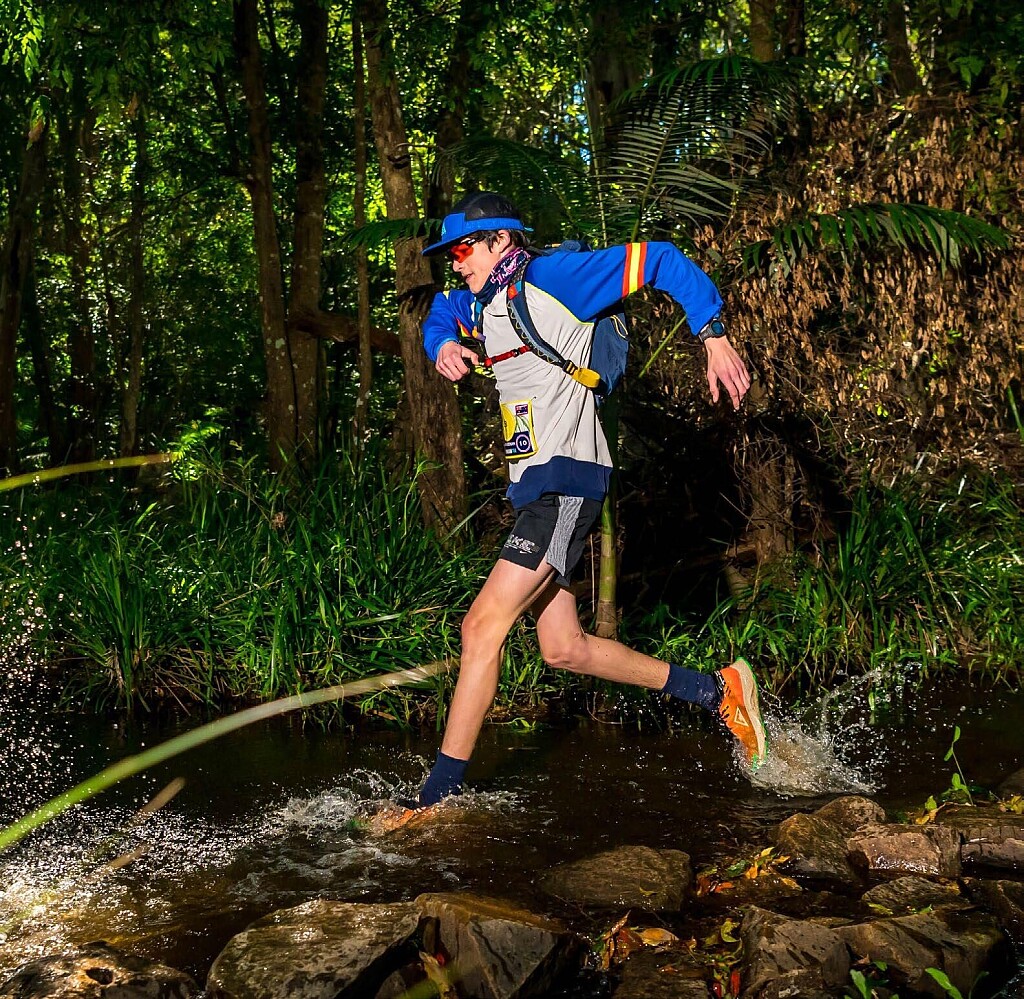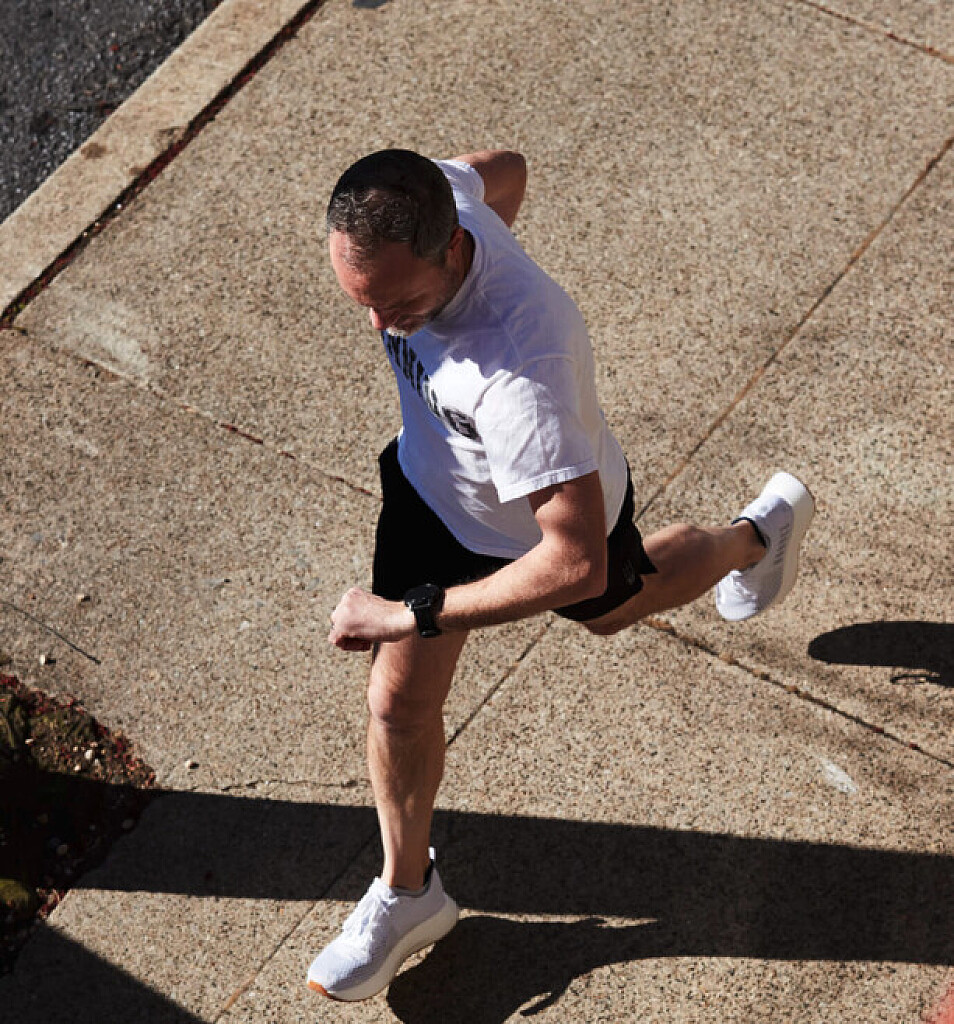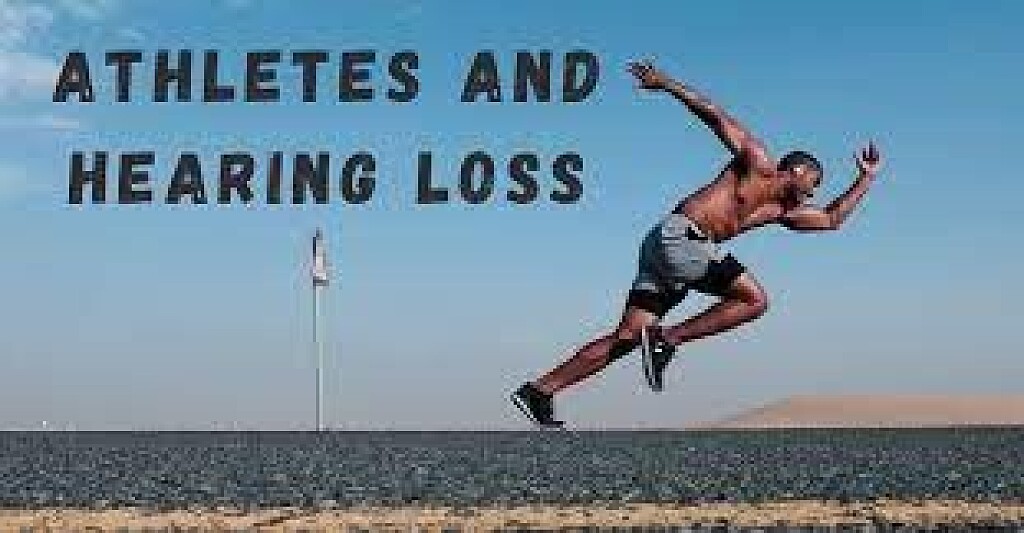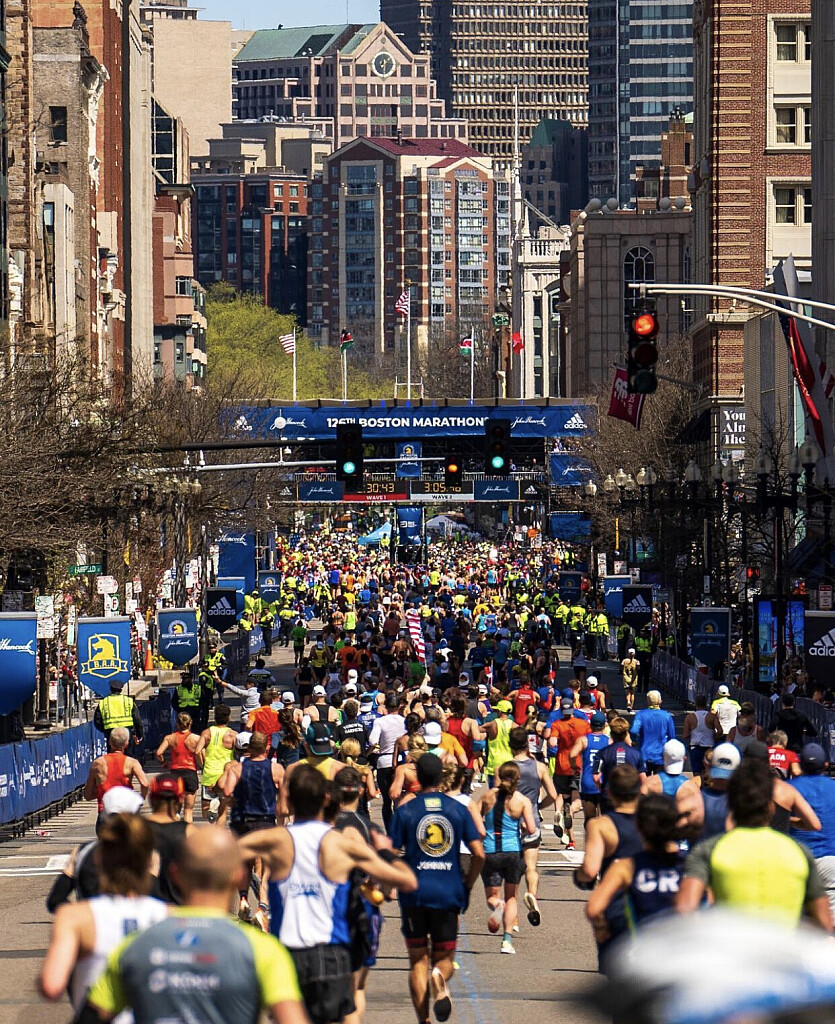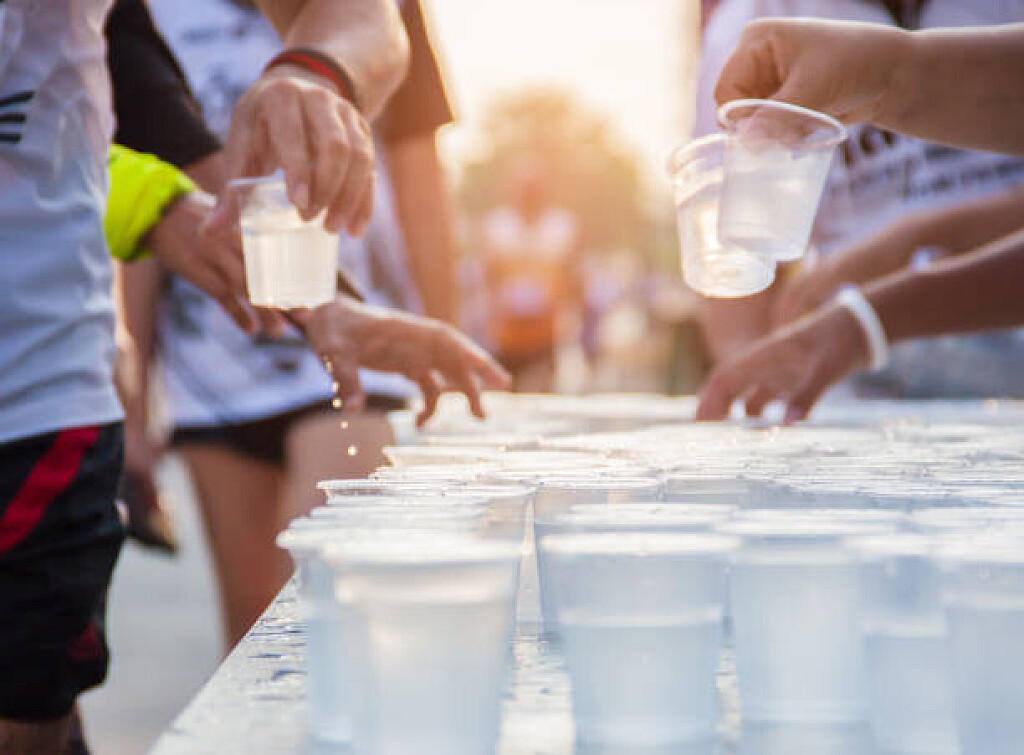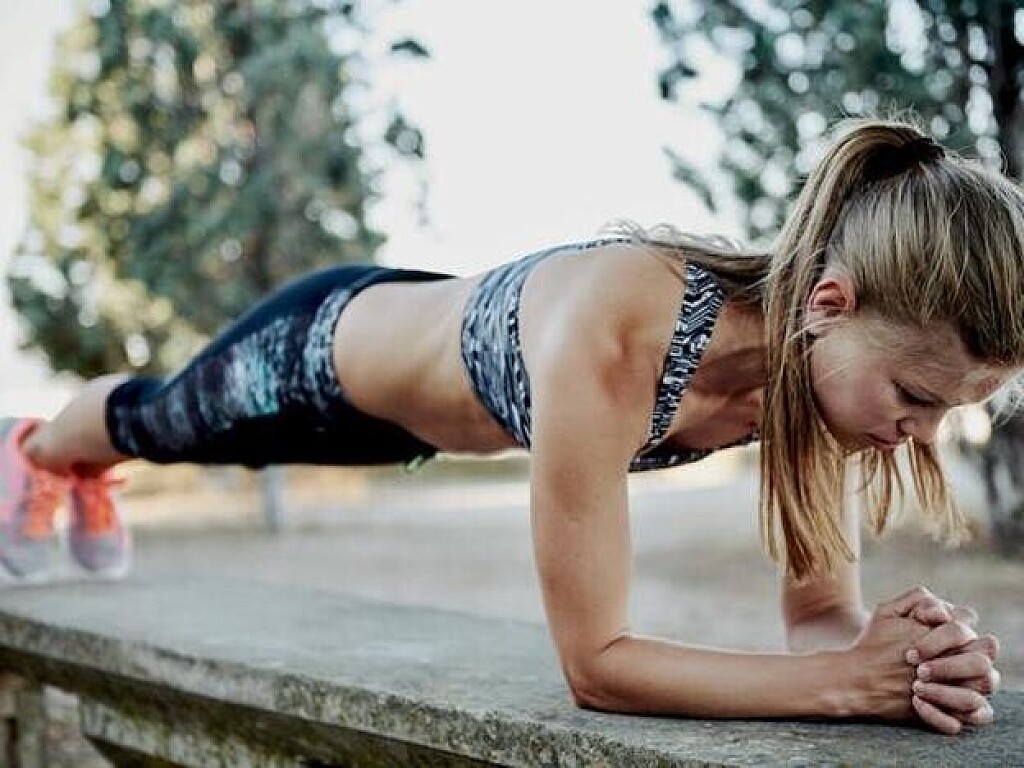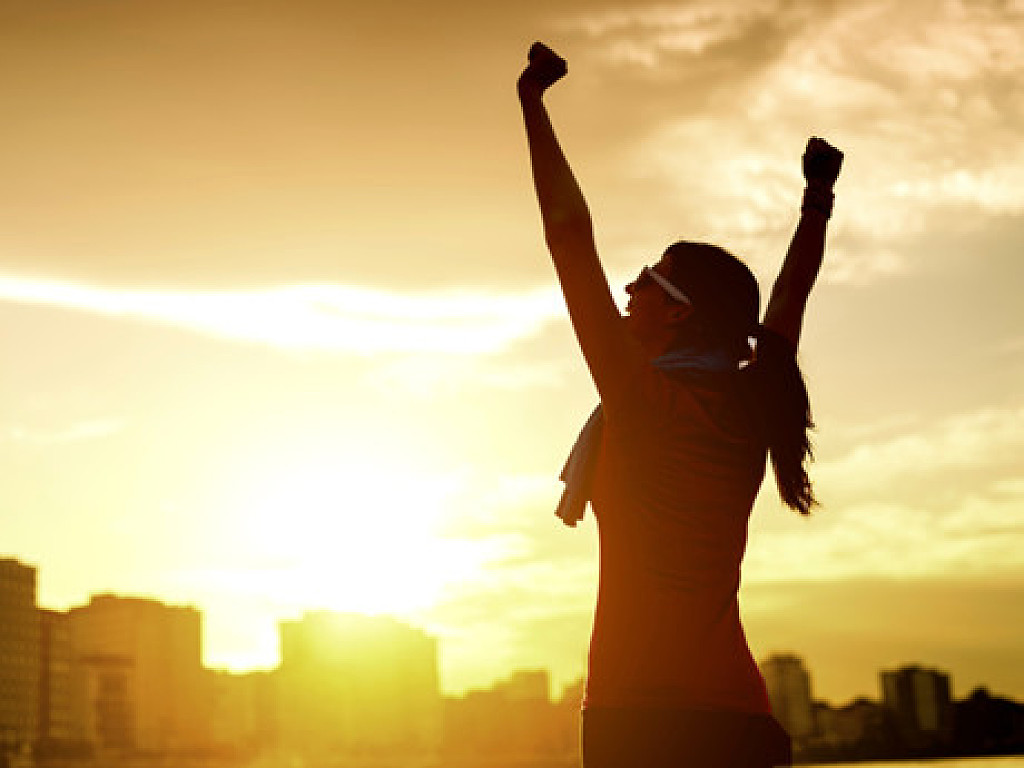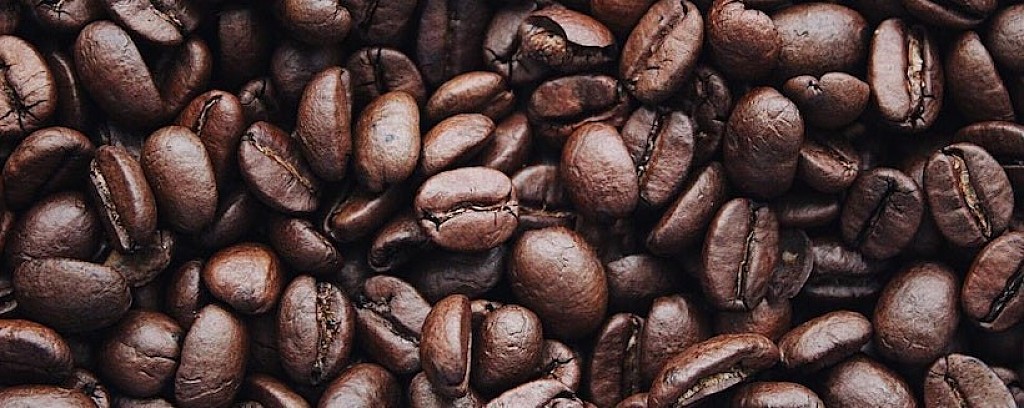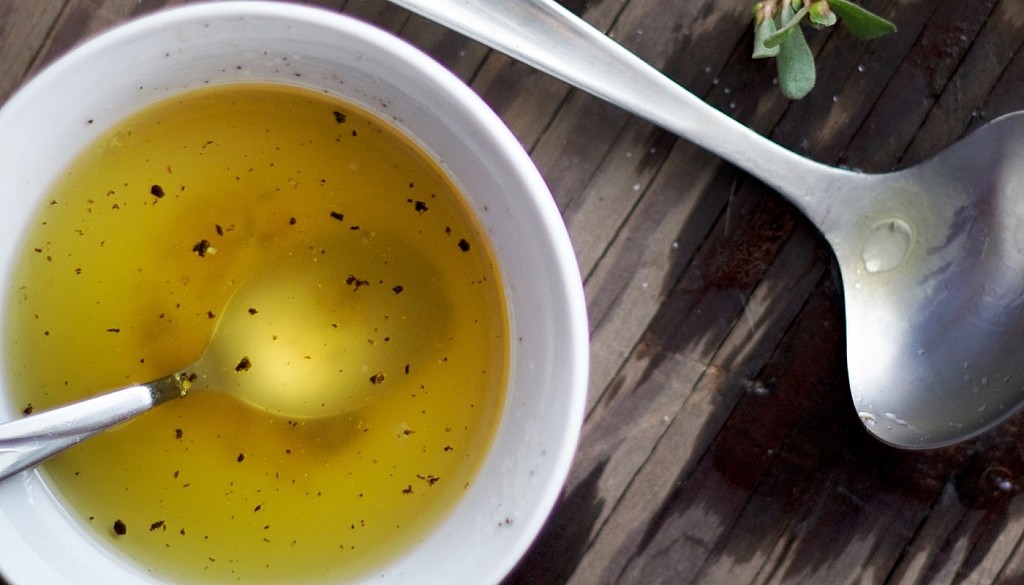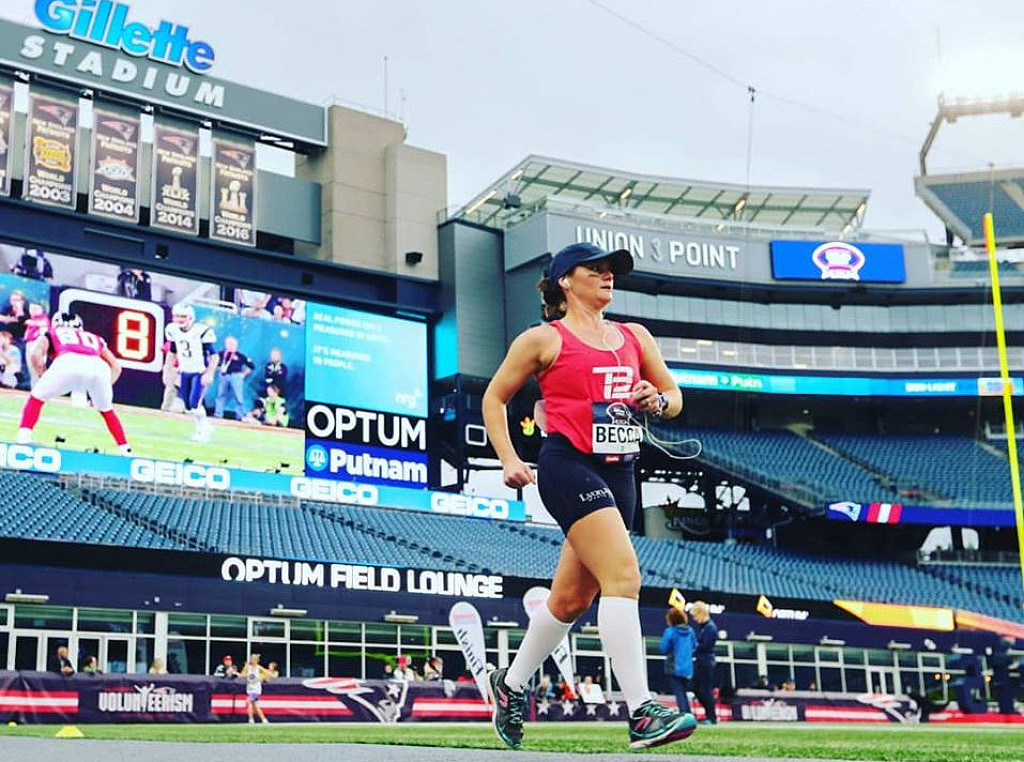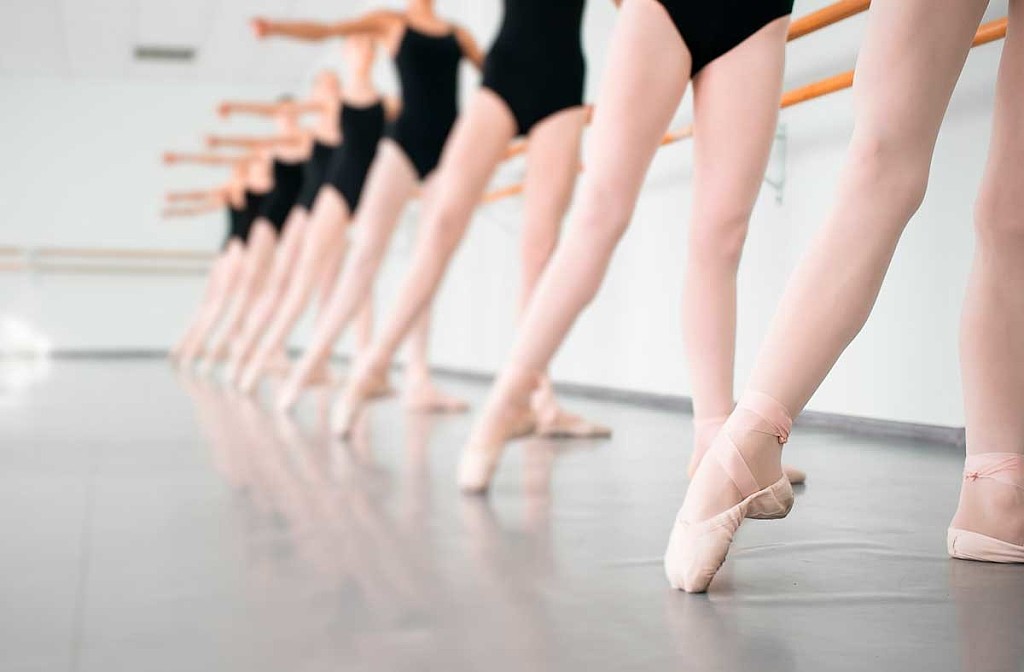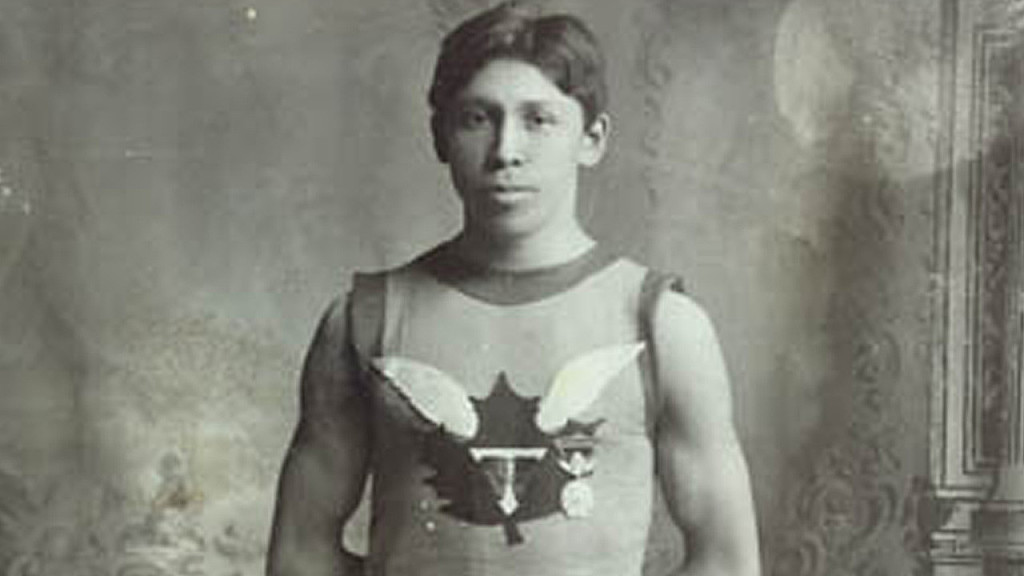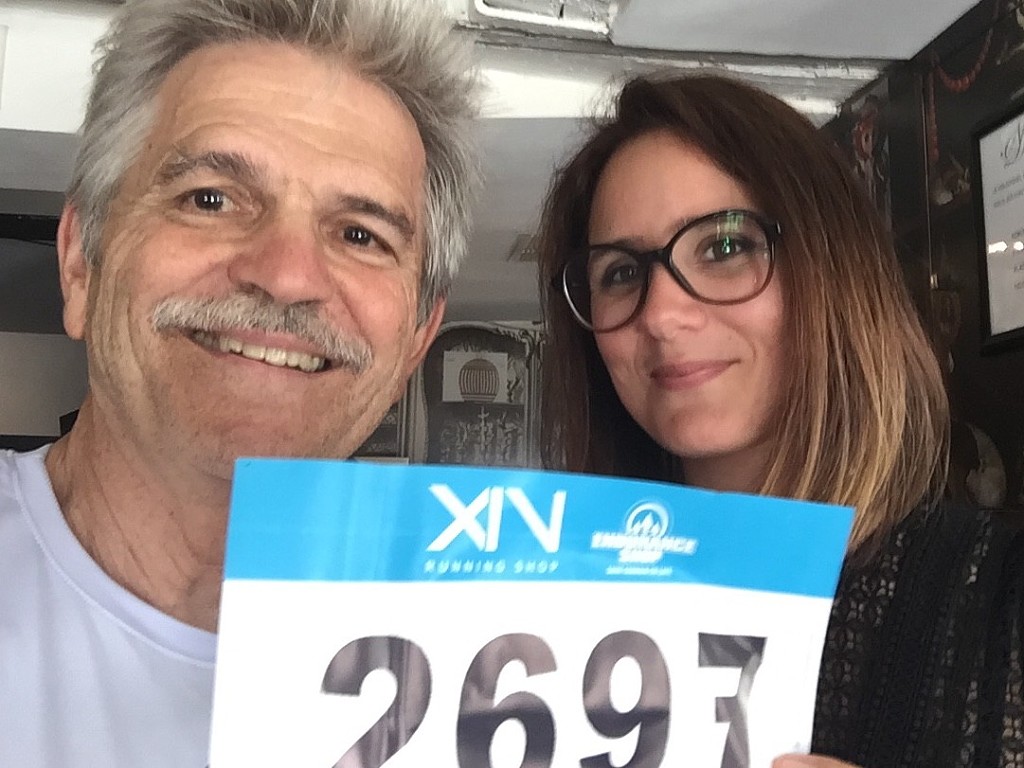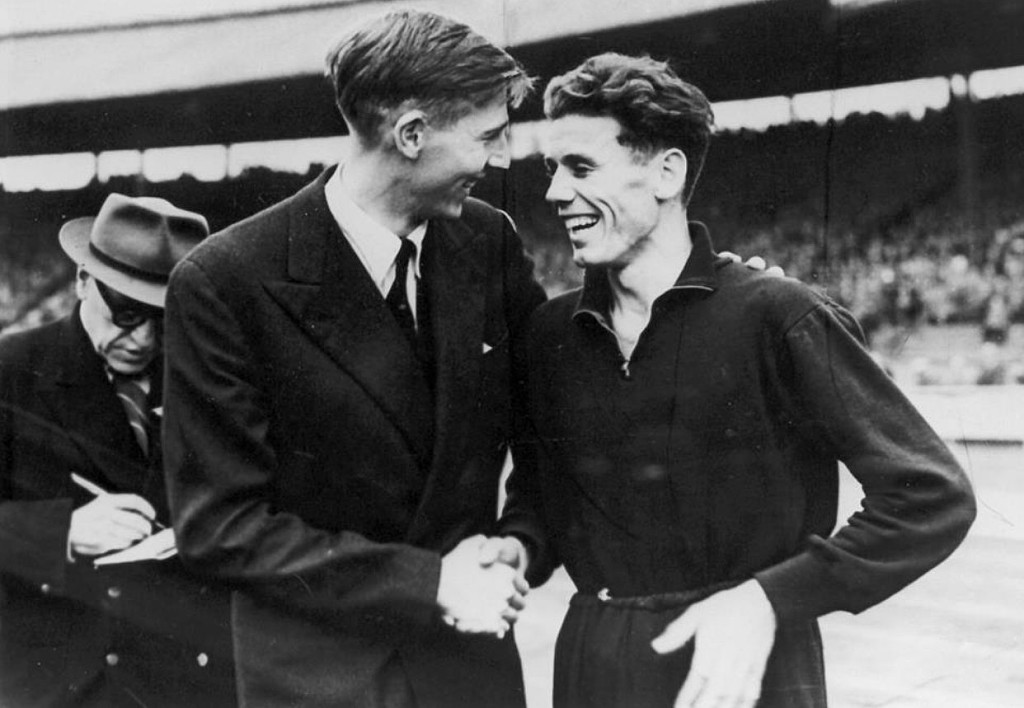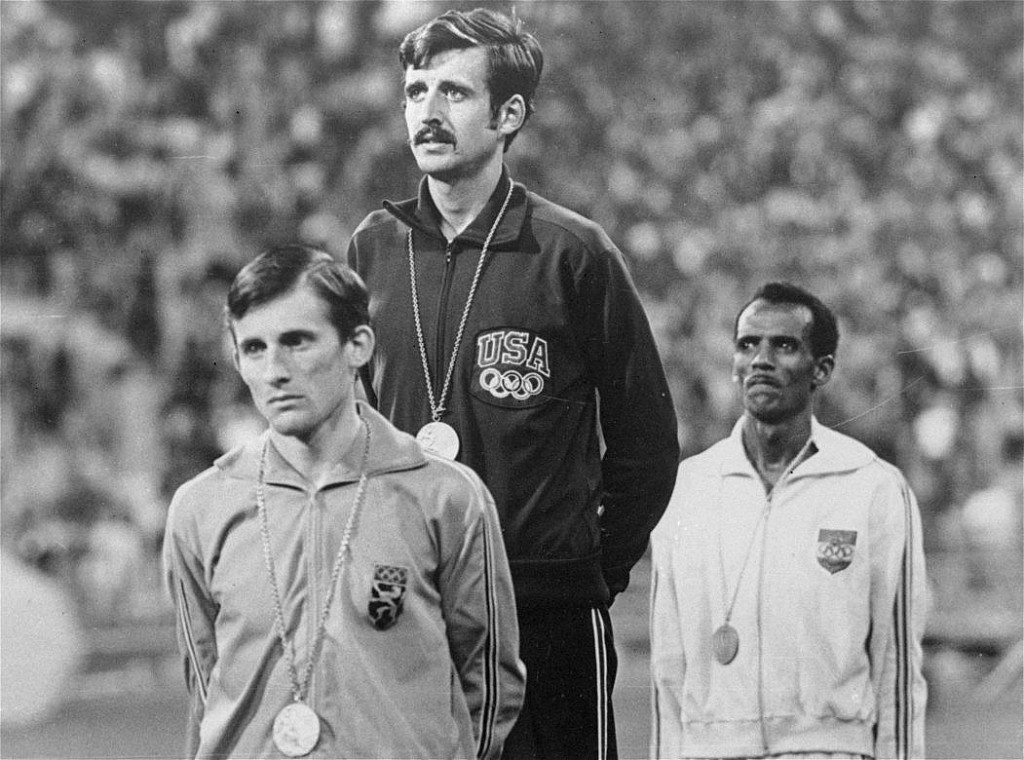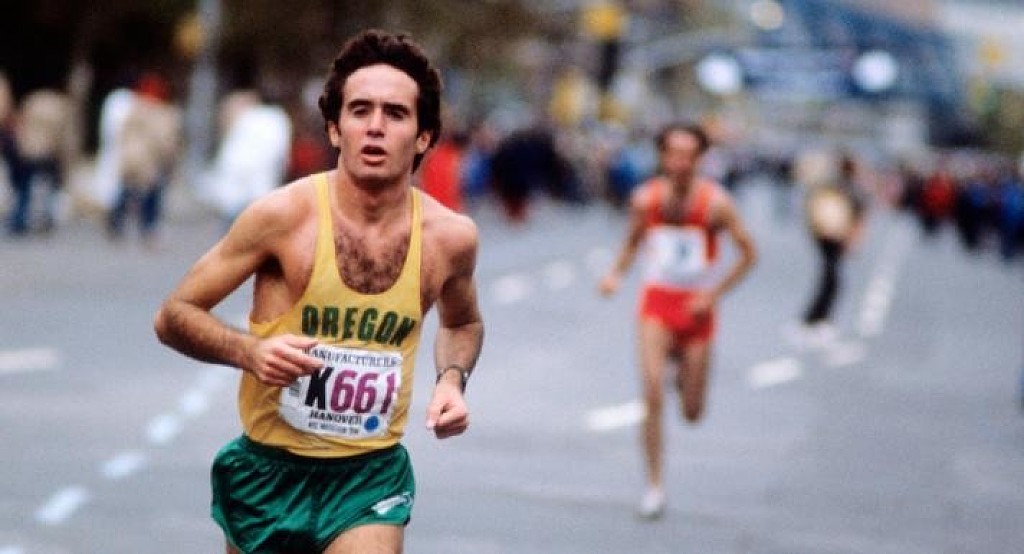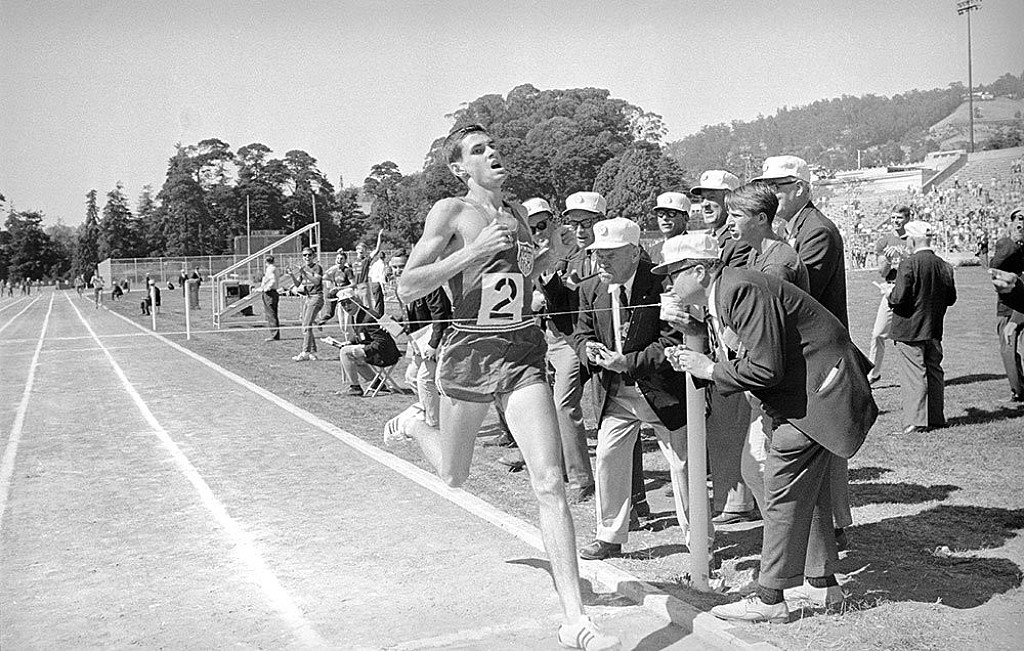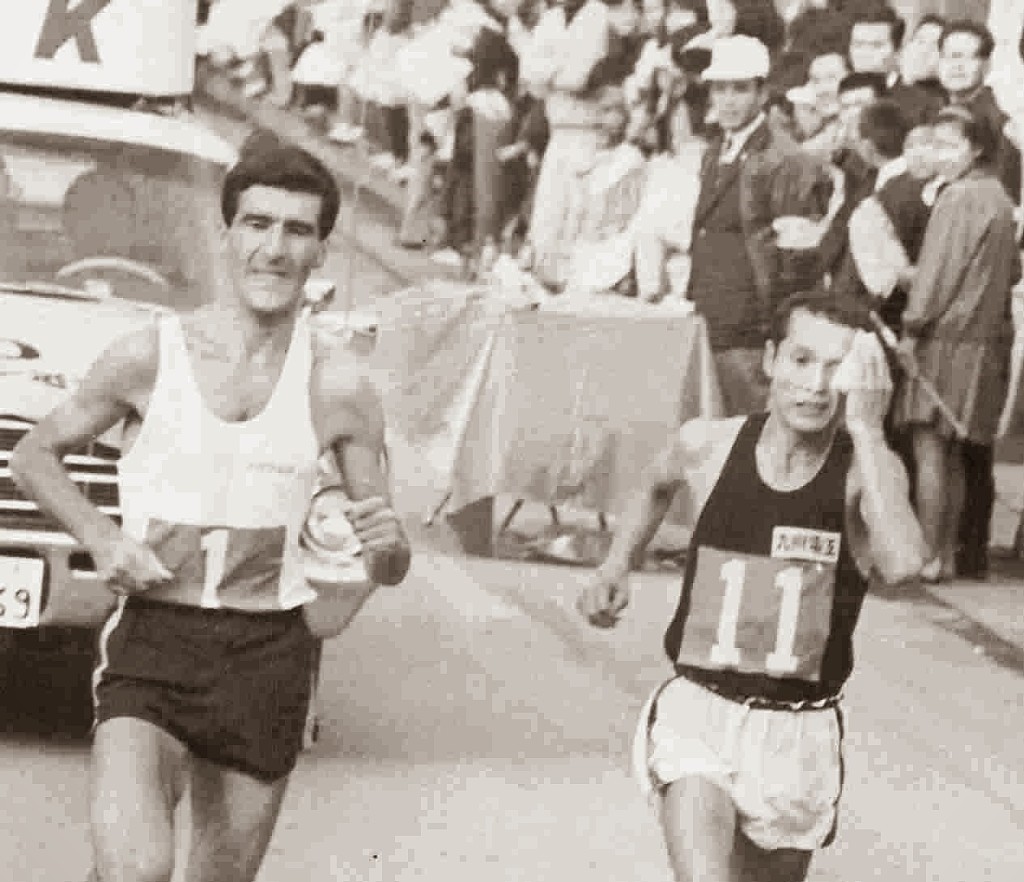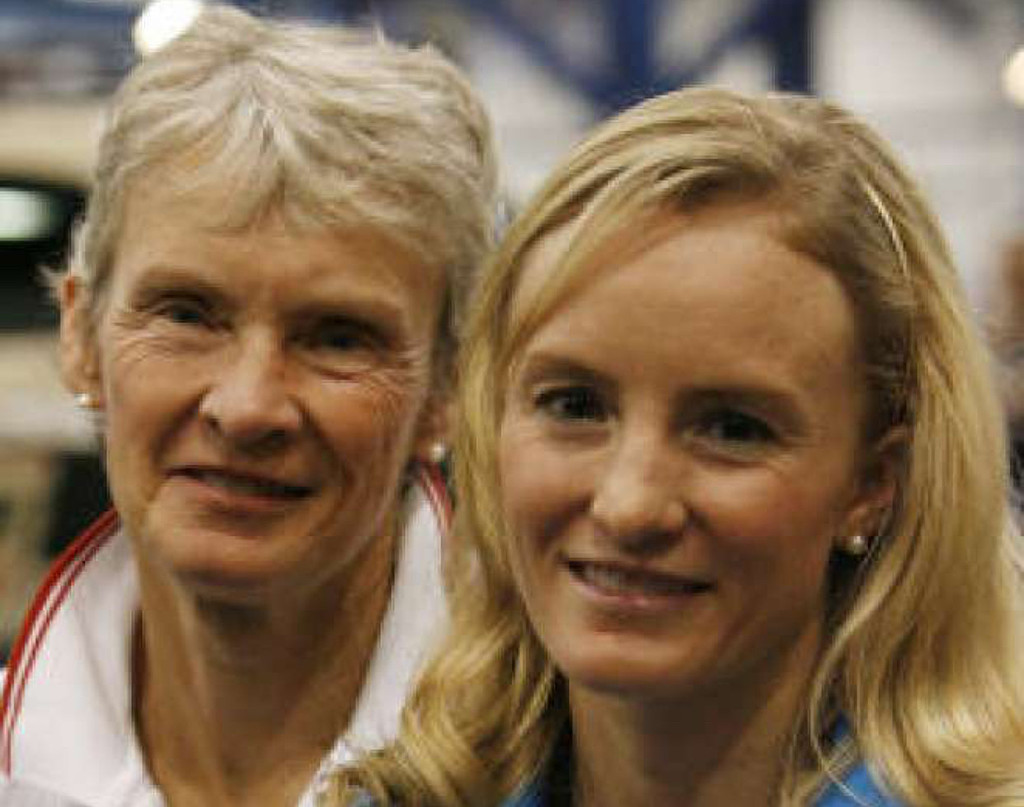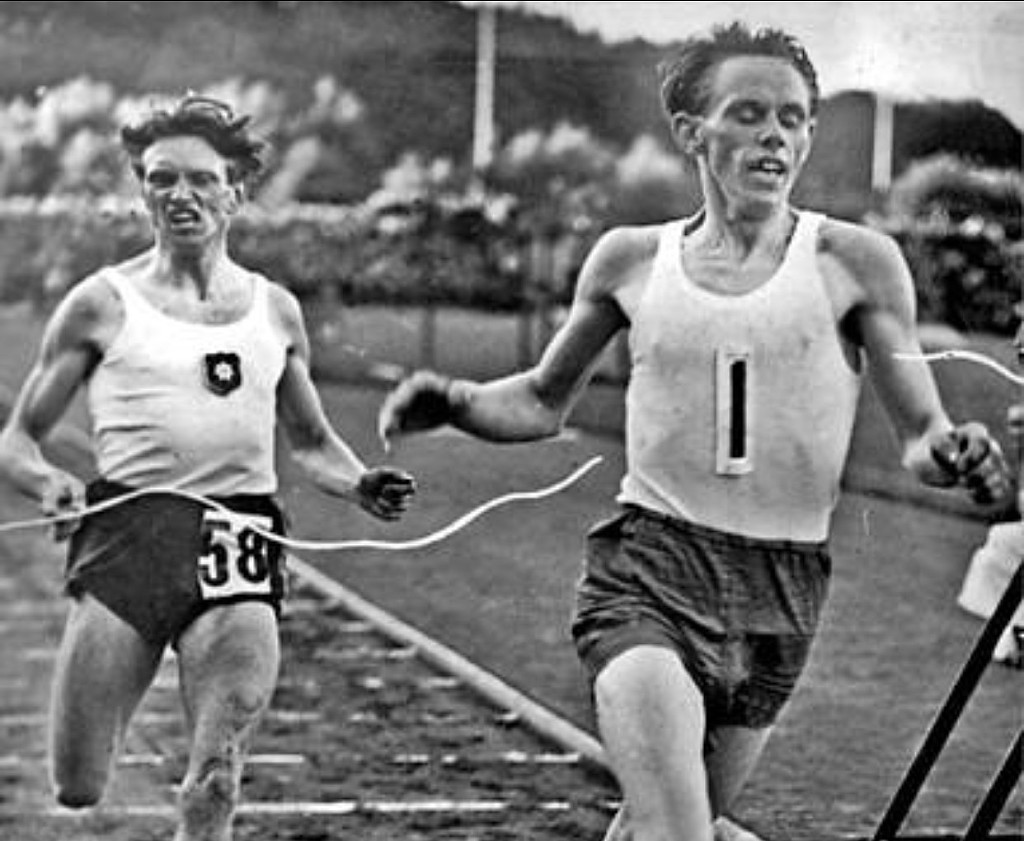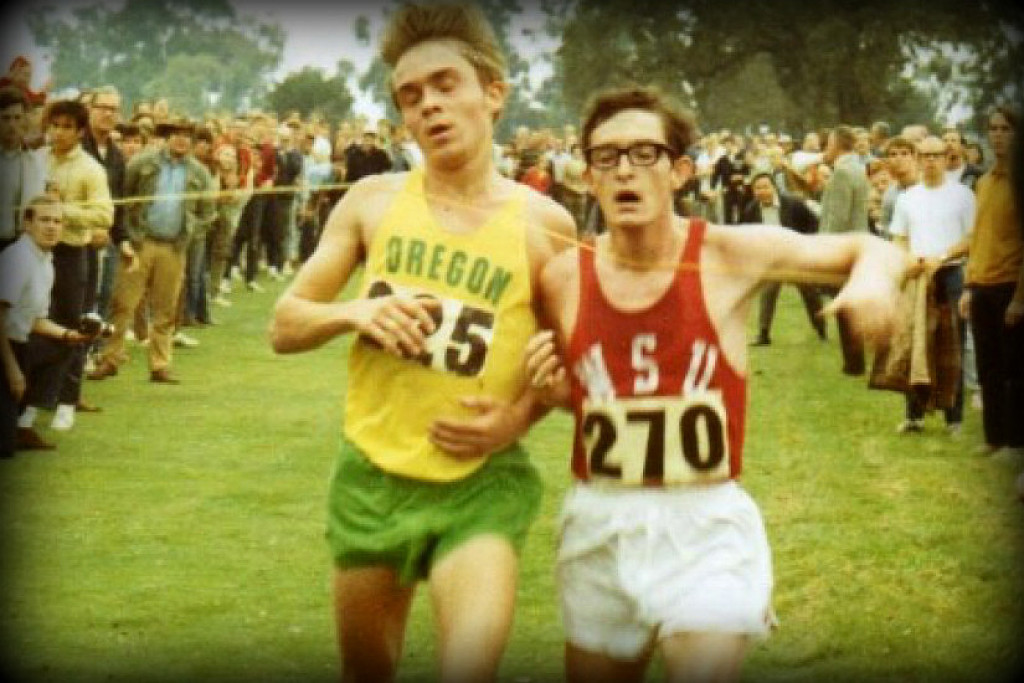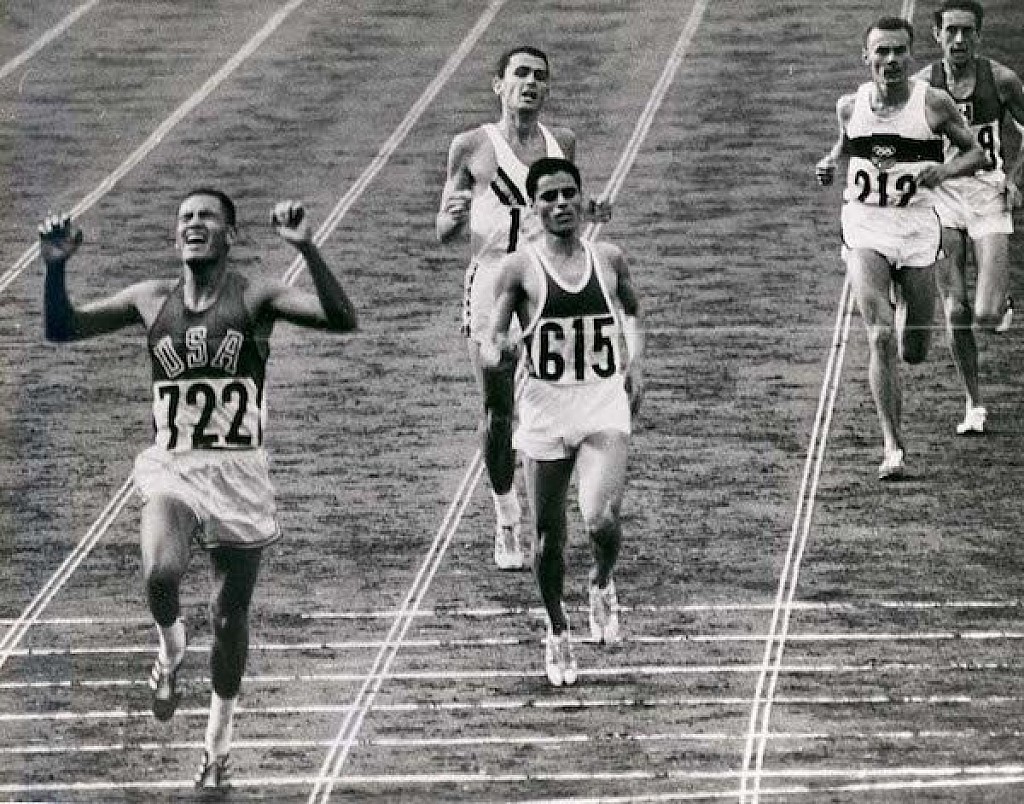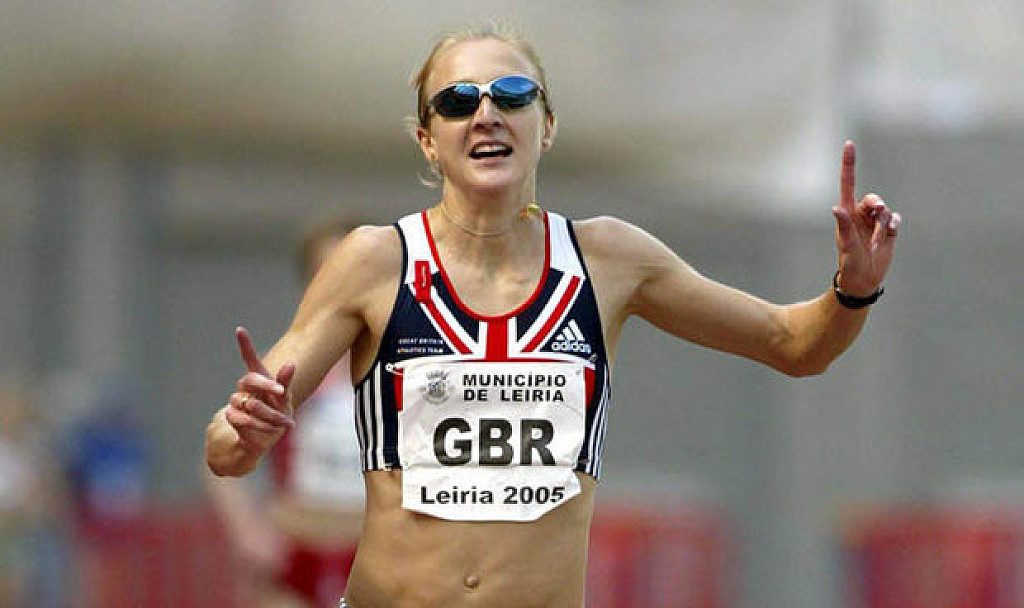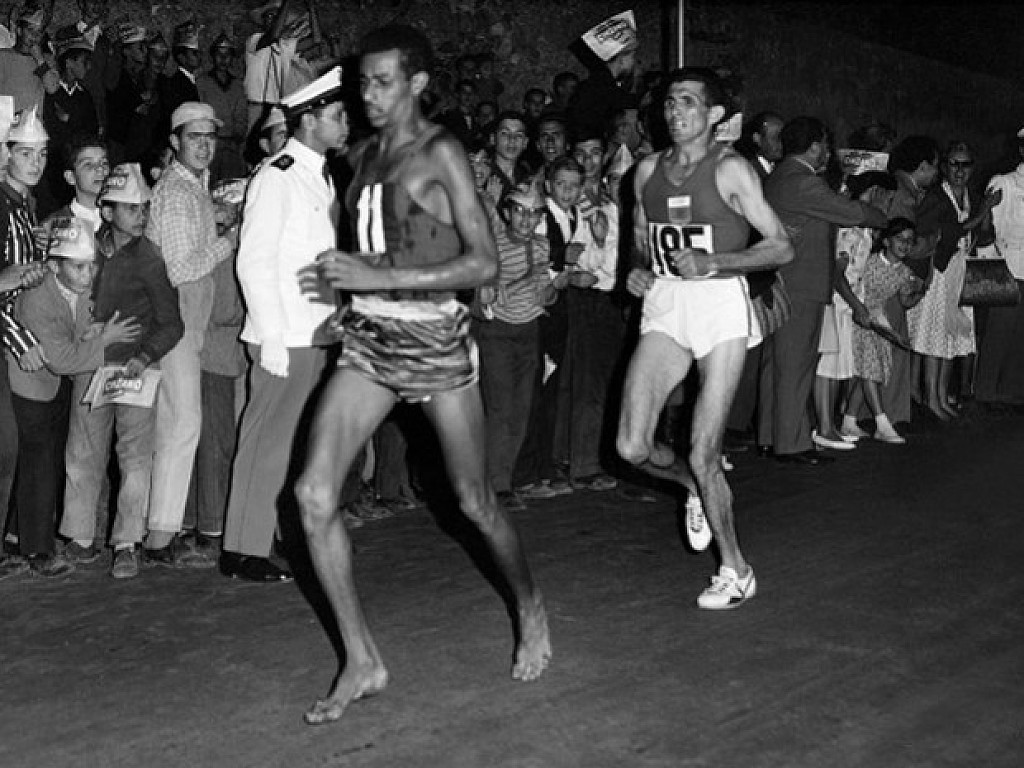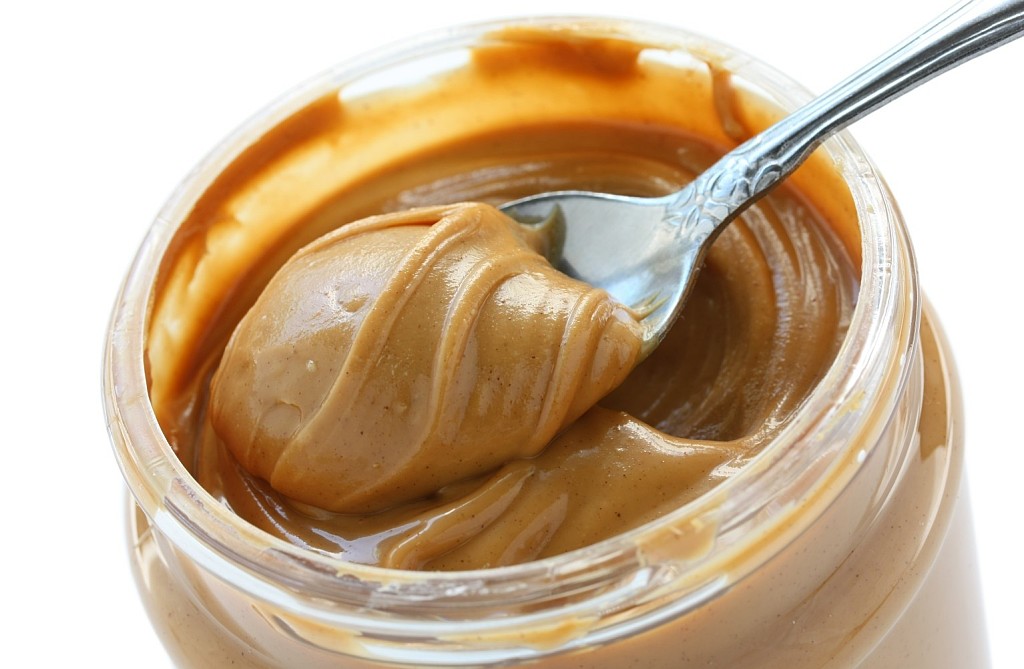Running News Daily
Running News Daily is edited by Bob Anderson in Mountain View, California USA and team in Thika Kenya, La Piedad Mexico, Bend Oregon, Chandler Arizona and Monforte da Beira Portugal. Send your news items to bob@mybestruns.com Advertising opportunities available. Over one million readers and growing. Train the Kenyan Way at KATA Running Retreat Kenya. (Kenyan Athletics Training Academy) in Thika Kenya. Opening in june 2024 KATA Running retreat Portugal. Learn more about Bob Anderson, MBR publisher and KATA director/owner, take a look at A Long Run the movie covering Bob's 50 race challenge.
Index to Daily Posts · Sign Up For Updates · Run The World Feed
Articles tagged #DID YOU KNOW
Today's Running News
Should trail running be an Olympic sport?
Did you know that off-road running was part of three historic summer Olympic Games, including the 1924 Olympics in Paris? One hundred years on, runners from four different clubs in Britain have come together to launch a campaign to bring trail running (as we now call it) back to the Olympics. The next Games to include new sports is Brisbane 2032, and the group of passionate trail runners feel strongly that trail running deserves a spot.
“At Paris 2024, four new sports are being added that include breakdancing, surfing, skateboarding and sport climbing,” runner Jimi Harrison said in an interview with British media outlet The Star. “We feel that new Olympic sports should reflect the trends and popularity of the current day and believe the time has come for trail running to be adopted at future Olympics.”
To raise awareness for the cause, Harrison and the group ran a relay of more than 455 km, from London to Paris. Their feat ended on Sunday in the French capital.
Backed by running shoe brand Merrell, the group are calling on Olympic decision-makers. They have written an open letter to representatives of the International Olympic Committee (IOC) and International Trail Running Association (ITRA) to support their cause. (Merrell recently signed Olympian Alexi Pappas to its athlete roster. Pappas, who raced the 10,000m at Rio in 2016, setting a national record for Greece, ran two big trail ultras in 2023: the Black Canyon 100K and the Leadville 100.)
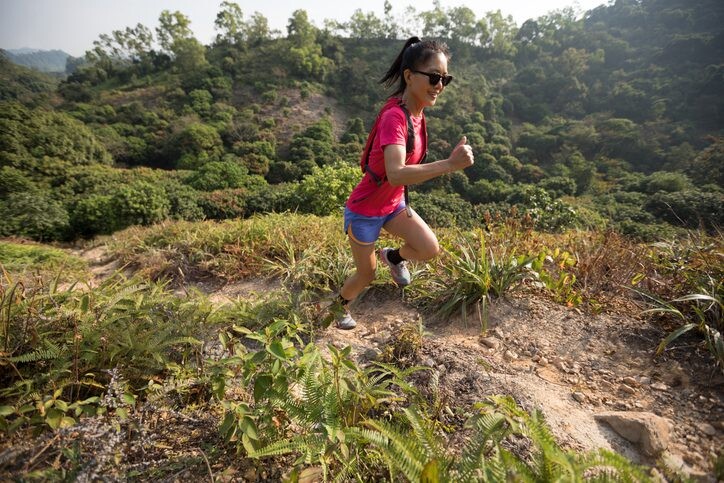
Some would argue that cross-country running is a more obvious fit for inclusion in the Olympics. With shorter, looped, spectator-friendly courses, cross-country could be more attractive to broadcasters, thus generating more interest. And cross-country usually features track runners. There is less crossover between track and trail running, though it’s not unheard of for track runners to transition to trails, as we have seen.
This is not the first attempt to bring trail running to the Olympics. In 2021, a trail running company from Spain launched its own campaign to bring it to the 2028 Olympics in Los Angeles. (They were not successful.)
Trail running has increased significantly in popularity in recent years, thanks partly to events like the Barkley Marathons, UTMB (Ultra-Trail du Mont-Blanc) and the Golden Trail Series, which make international news headlines.
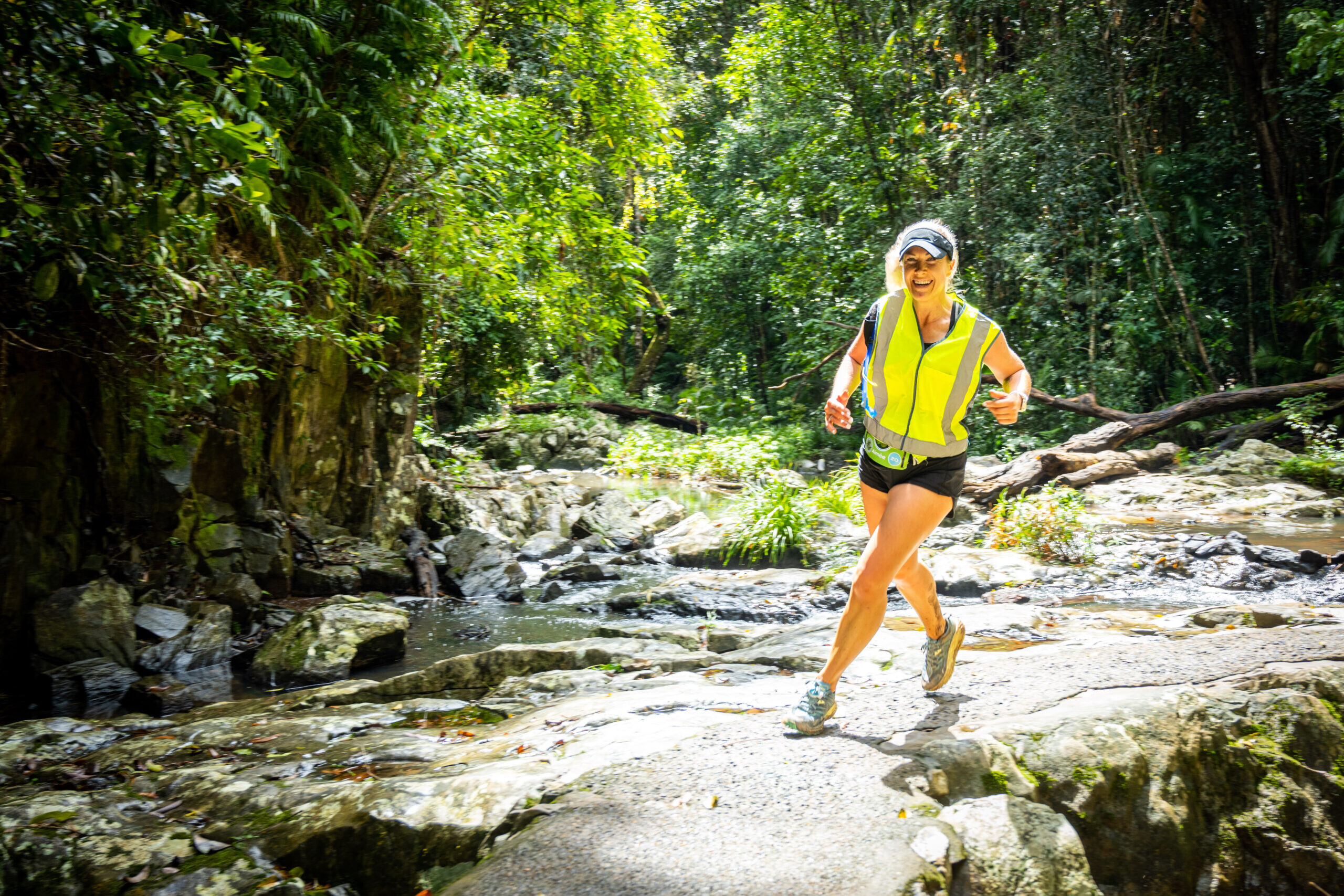
by Claire Haines
Best Streaming Services for Sports 2023
Streaming services now provide the sports content we crave. We have narrowed down the top services that offer the best channel and league selections for sports enthusiasts. Numerous services exist, each presenting a distinct lineup of channels and league coverage. Continue reading to assess and compare each one, ultimately making an informed choice based on your preferences.
#1 ESPN Plus
ESPN's dedicated streaming service with a variety of sports content, including NHL, NBA, etc. The service offers access to non-market NHL games, LaLiga Bundesliga matches for $10 per month or $100 per year. An ESPN Plus subscription will include prestigious tennis events like Wimbledon and the US Open, select out-of-market MLB games, and NCAA football and basketball matchups. Don't miss the opportunity to watch rising talents in the Little League World Series and catch thrilling UFC matches included in the subscription. Please note that live NBA basketball and NFL football games are not available, and pay-per-view UFC events require an additional fee.
#2 Hulu Plus Live TV
Hulu Plus Live TV provides a unique option for sports enthusiasts. While it may lack certain league-owned channels, it comes bundled with an ESPN Plus subscription. The cost is $70 per month, and the service includes major networks, ESPN, TBS, TNT, FS1, FS2, and four RSNs. However, it does not offer MLB, NHL, NBA, or Tennis channels, except for the NFL network.
If you choose sports subscription services, then you have a Smart TV. Did you know that you don't need to have a Smart TV to watch sports streaming? To get online sports access, you just need to buy and unlock Fire Stick's, as well as connect it correctly. By "unblock" we mean to open all available 2023 sports content. To do this, you need to know how to use a VPN on Amazon Fire Stick. Once you figure it out, you can watch Netflix, Hulu, Amazon Prime, and other services without regional restrictions.
#3 YouTube TV
YouTube TV is priced at $65 per month, but presently, you can get it at $10 off for the first three months. It provides four RSNs, FS1, FS2, ESPN, TBS, TNT, and all major national networks. The standard package includes almost all league channels, except the NHL Network. You can also opt for an extra Sports Plus package, although it doesn't provide much, except BeIn and NFL Red Zone. To find out which local networks and RSNs are available in your area, enter your ZIP code on YouTube TV's welcome page.
#4 Peacock Premium
NBC's Peacock offers not only on-demand entertainment but also live sports. Subscribing to the $5-a-month Premium tier grants users access to a range of thrilling events, including English Premier League soccer, the Olympics, select WWE matches, Indy Car races, and certain PGA golf tournaments. The platform also broadcasts less mainstream sports like rugby, figure skating, cycling, and track and field. True, to see everything that is available on the service, you will need a VPN extension Chrome for a PC or a VPN for a router. Although Sunday Night Football is a standout attraction during the season, Peacock shines brightest for avid soccer and wrestling enthusiasts.
#5 Sling TV
Sling TV packages cater more to casual fans rather than offering an extensive range of options. Notably, Sling Blue lacks a single RSN for local broadcasts, but you can still access some national broadcasts. The Orange plan includes ESPN, while the Blue plan offers FS1 and the NFL network. However, neither plan grants access to ABC, which may be inconvenient for many fans. For an additional cost of $11 a month with either the Blue or Orange plan or $15 for the combined Orange and Blue plan, you can opt for the Sports Extra add-on. This add-on includes the NBA, NHL, and MLB channels, along with PAC 12, BeIn, Tennis channel, and more. The individual plans are priced at $40 a month each, while the combined Orange and Blue plan costs $55 a month. Currently, you can enjoy your first month at a 50% discount. You can check which local channels are available in your area here.
#6 FuboTV
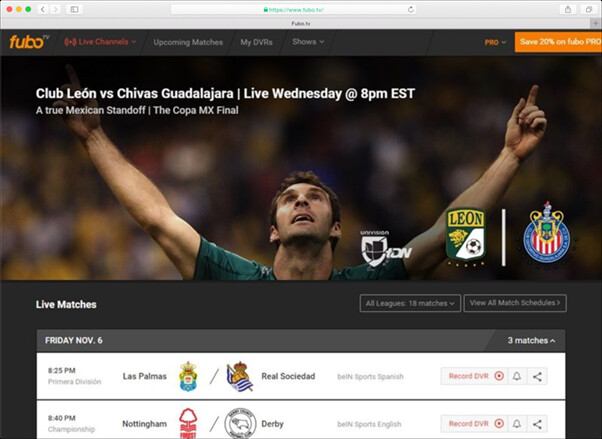
FuboTV is currently priced at $75 per month and provides access to 35 RSNs. It features ESPN but lacks TBS and TNT, which might pose an issue for certain sports enthusiasts. Additionally, it offers local networks such as ABC, NBC, CBS, and Fox, along with FS1, FS2, BeIn Sports, the Big 10, and the Golf channel.
If you wish to enjoy additional content, you can opt for the Fubo Extra Package, available for an extra $8 per month. Alternatively, you can subscribe to the $85-a-month Elite streaming tier, which includes Fubo Extra and provides access to NHL, NBA, MLB, SEC, PAC 12, and Tennis channels. To view the complete list of local networks and RSNs available on FuboTV, click here. Feel free to read our detailed FuboTV review for more information.
Conclusion
While this roundup primarily focuses on sports content, these services operate within a broader context. The costs of monthly subscriptions can quickly accumulate, and not everyone in your household may share the same interest in sports. Depending on the package you choose, these options can cost upwards of $60 per month, and add-ons can further increase the monthly price.
It's worth considering whether these services offer value for other members of your household. The best sports streaming services often provide impressive lineups of news and entertainment programming, making them suitable for general audiences as well.
(09/15/2023) Views: 2,064 ⚡AMPNeed More Energy? Try These 5 Foods Full of Vitamin B12
Vitamin B12 is an important player in keeping your engine running and your energy levels up. Find out which foods can increase your intake naturally.
Did you know vitamin B12 is often called “the energy vitamin”? Not only is vitamin B12 pivotal in keeping your blood and nerve cells healthy, but it’s also involved in making DNA – meaning it’s literally part of the material that makes up every single cell of your body. Studies have found Vitamin B12 helps athletes build muscle mass and improve endurance, reduce muscle fatigue, boosts production of red blood cells, and speed recovery. So, when you hear health professionals say vitamin B12 is kind of a big deal, we mean it!
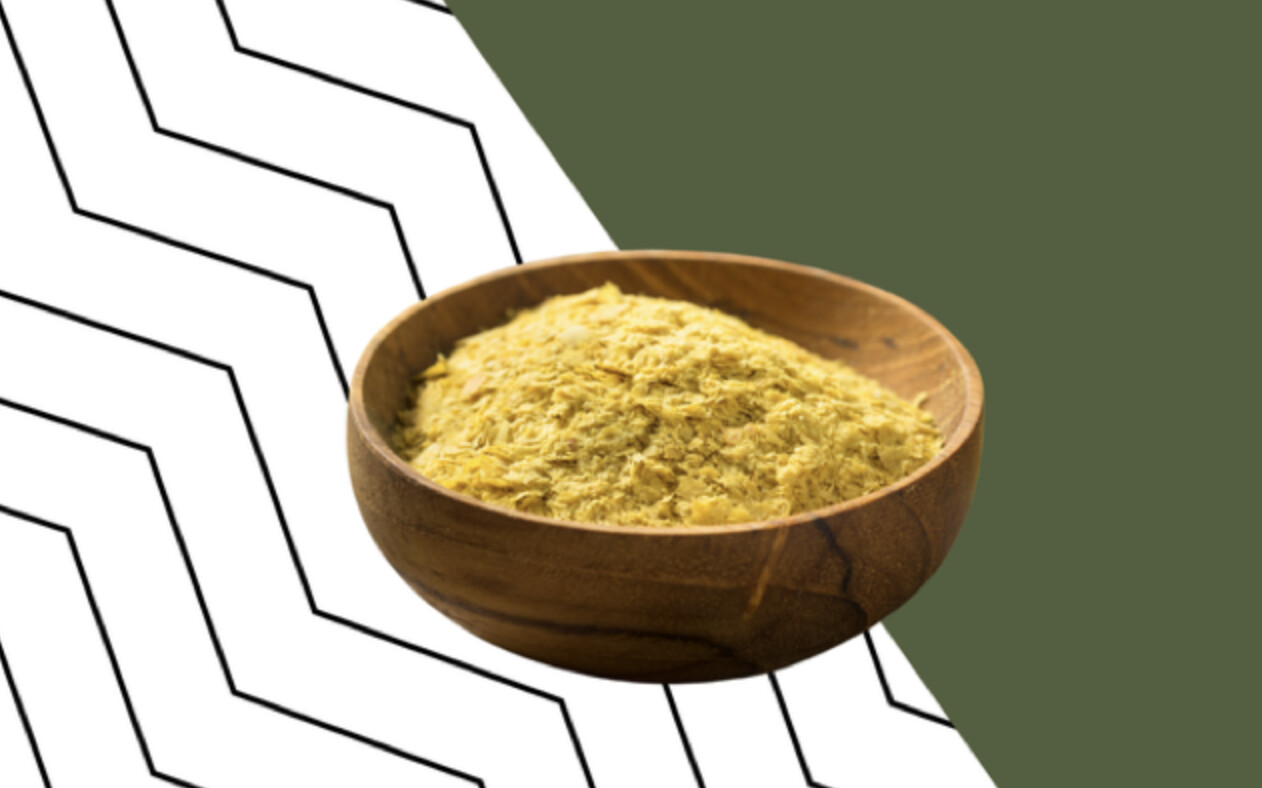
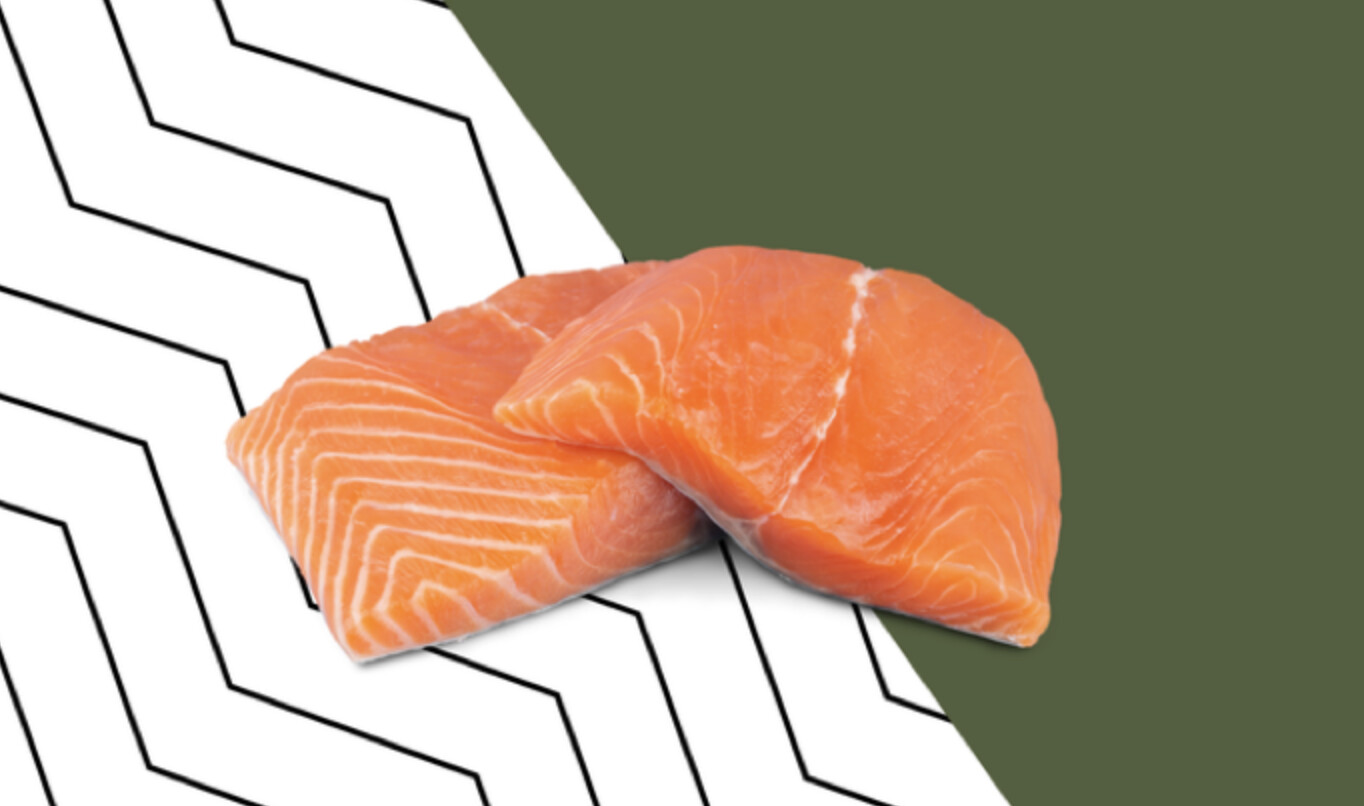
Now, there may be a “magic pill” for what seems like everything these days, including vitamin B12, but buyer beware. Vitamin B12 infusions offered by high-end shopping centers and spas tout a “natural” boost of energy for a pretty penny. But are they really necessary? Most likely, no. I will admit, I’m a bit biased in that I have a food-first, supplement-as-safety-net philosophy. But I still couldn’t fathom paying the $90 I’ve seen quoted per infusion when research shows there are staple foods you can easily eat more of to naturally increase your B12 levels.
Skip the pricey infusions and instead try tweaking your diet. Consider adding these five foods into your meals to naturally increase your intake of vitamin B12. And, of course, always consult with your healthcare provider if you have any questions or concerns about your particular needs. Some lifestyles, such as vegan and vegetarianism, do require supplementation of B12 to ensure you are meeting your needs.
The following foods all contain 20% or more of the recommended daily vitamin B12 intake (2.4 micrograms per day for adults). With these in your daily rotation, you can boost your energy and ensure you’re eating a well-rounded, nutrient-rich diet.
Did you know vitamin B12 is usually found in animal products and proteins, yet one of the richest sources is actually vegan? I’m not kidding! Nutritional yeast is a vitamin B12 powerhouse with ¼ cup providing anywhere from 8.3 to 24 mcg per serving, or about 346 to 1000% of the daily value. While the amount varies from brand to brand, it’s without question worth it to add a little sprinkle of nutritional yeast to your pastas, popcorn, and sauces to help increase your B12 intakes, naturally.
If you’re new to nutritional yeast, it has a flakey texture and blends well into dishes you’d like to impart a cheese-like flavor, all while keeping your recipes dairy-free.
There’s more than just omega-3s found inside delicious and nutritious seafood. A 3-ounce serving of cooked salmon provides 2.6 mcg of vitamin B12, or about 108% of the daily value! Plus, it also contains vitamin D, an important nutrient necessary for keeping your bones healthy.
While salmon comes in a variety of convenient options, from smoked and refrigerated to cooked and canned, there are a plethora of ways to add more salmon into your busy routine.
Along with an array of other important nutrients that support healthy living and aging, an 85% lean, 15% fat pan-browned 3-ounce portion of ground beef contains 2.4 mcg of vitamin B12, or about 100% of the daily value. For individuals who struggle to get enough vitamin B12, choline, iron, zinc and protein in their diets, lean beef is an excellent addition that provides quite literally a lot of bang for your nutritional buck. It’s easy to prepare and pairs well with other nutrient-rich foods, like fruits and vegetables, that most Americans need to be eating more of.
Unless you have a food allergy or lifestyle preference, there’s no reason to remove cow’s milk from your diet. It’s high in vitamin B12, coming in at 1.3 mcg per 1 cup serving, or about 54% of the daily value. Dairy milk plays an important role in growth and development through supporting bone health, as well as regulating blood pressure.
If milk isn’t your jam, you can still reap the benefits of dairy by including yogurt in your diet, too! A 6-ounce container of yogurt contains 1 mcg of vitamin B12 too, or about 43% of the daily value.
Quite possibly my favorite B12-rich food to recommend to families regardless of economic stance is fortified breakfast cereal. It’s convenient, available on multiple government food assistance programs and downright delicious. A serving (about 1-1 ¼ cups) of most standard fortified breakfast cereals provides about 25% of the daily value of vitamin B12, or about 0.6 mcg. Pair the cereal with cow’s milk and you get a double dose of vitamin B12!
While there’s a wide variety of fortified breakfast cereals to choose from, I recommend choosing two. First, choose one that contains minimal added sugar, like a whole grain oat cereal. Then, choose a second that your family loves, usually with a tad more added sugar. Do a 70/30 blend of the whole grain oat with the “fun” cereal to create a nutrient rich bowl of goodness to start your day!
(09/10/2023) Views: 398 ⚡AMPby Outside Online
FEEL LIKE QUITTING YOUR RUN?
There are various reasons to want to quit a dreadful run: The weather conditions may not be in your favor, maybe you didn’t get enough sleep, or perhaps you’re sore from previous workouts and now feel sluggish. You know your body is capable of finishing—you’ve been here before—but your brain is just not on board. Unless you’re physically hurt (in which case, you should stop immediately), it’s time to pull some serious motivational self-talk from deep inside your pockets to get in the final miles.
What else helps? Knowing that you’re not alone. It happens to most runners, including Runner’s World staffers and RW+ members alike. They have bad days as well but also their own tricks to turn them around. Here are some of them.
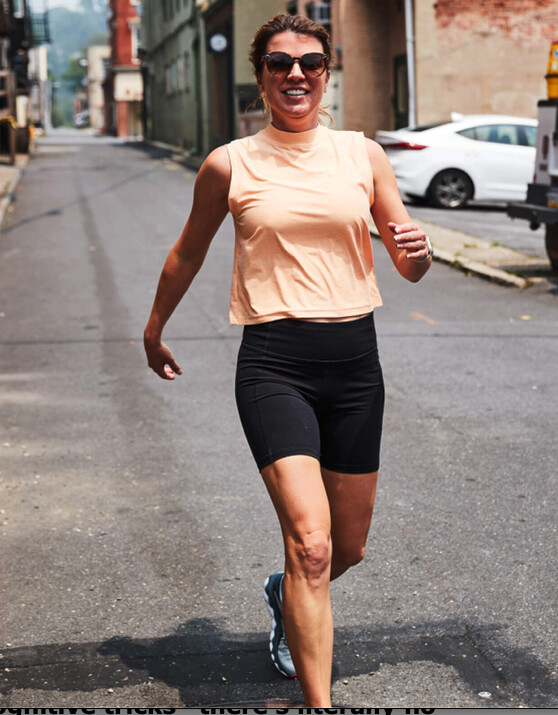
KEEP SPEED UNDER CONTROL
Midrun, usually I’ll just tell myself to slow down for the next mile so I can relax and get back into a groove. What I find always happens is I end up slowing my pace for only a few seconds, maybe a minute, and end up right back at my usual pace feeling okay.
In a race, it’s a different story. I’ll usually force myself to take a look at my heart rate or breathing. If it’s all under control for the given speed, I tell myself that everything is fine and that I have no reason to bail. I’m not big on mantras, personally, so using whatever data I have at hand helps me get past those moments when it gets hard. JEFF DENGATE // Director of Product Testing
GIVE LINGUISTIC ZOOMING A SHOT
I ’m sure you’ve heard about the value of positive self-talk. But did you know that switching the point of view can make a difference? During tough track intervals, I’ve been trying out something called linguistic zooming, which is when you use the second- or third-person point of view to talk to yourself. This creates distance between yourself and the stress you encounter. So instead of saying, “I’m crushing this run. I’m gonna be done before I know it,” I’ll say, “Theo is crushing this run. He’s gonna be done before he knows it.” It’s a little weird at first, but it helps. And if I’m feeling brave, I’ll even talk to myself out loud. I love trying out these cognitive tricks—there’s literally no downside! THEO KAHLER // News Editor
IMAGINE THE POSTRUN FEELING
Take a quick rest, catch your breath, inhale and exhale deeply for a few breaths, do a little scream if you need to, and then tell yourself this: You’ve made the commitment to get out there. How are you going to feel later today if you throw in the towel now? Will your future self like your decision to quit when the going gets tough? No? Then just go! Change the narrative and start daydreaming about how good you’ll feel when you’re finished with the run and attack the rest of the run like it’s your only job in the world. Outrun the voice that tells you to quit. Not every run is going to feel amazing, but you’ll feel amazing at the end of the day knowing that you quieted the voice that said you couldn’t do it. JENNIFER ACKER // Health & Fitness Editor
DO IT FOR YOUR RACE DAY
We all get in the mental game: I’m done, I’m thirsty, my legs feel heavy, it’s too hot, and so many more! I coach my athletes to “run with joy” for every run—not just the glory of the big race. I want them to remember why they run. For me, I keep thinking of the actual race finish. I remind myself that without this effort, I cannot experience the glory of a race day. When training for my marathon two summers ago, while on a 15-miler on a very humid day, I was running the second half as a test. Mile 11 is when the doubt started to set in. I brought on the mindset that if I cannot finish this run, how the heck will I do it on race day? I pushed through successfully and had a good run, smiling in the end. So remember your “why” and let that push you to the finish of every long run. ADAM TILLS // RW+ Member
THINK OF RUNNING AS A GAME
A few years ago, I was caught in a torrential downpour while listening to “The Hero” theme song from the anime series One Punch Man. It reminded me of how my passion for running came from being a gamer, and suddenly I was in love with running in the rain. Why? Because running is exactly like gaming.
In a game, you often encounter enemies when you’re tired of battles/hills, down to your last potion, and ready to rest and heal/head home and drink a protein shake. But face them and you get experience points (EXP) and rewards like weapons and armor. How is pressing on in bad weather or tough terrain any different? It isn’t. ERIN FAN // RW+ Member
FOCUS ON ONE STEP AT A TIME
When training for my first half marathon, I was scared and doubted I could do it. This is what my trainer suggested after one training session: If I get to the point when I feel like quitting, I should stop, breathe, and instead of looking at the finish line, focus on the step in front of me and do what I can to make it the best step possible. We talked about setting points ahead to run toward to give myself smaller challenges. This advice has helped me get through seven marathons, including the time when I cussed my way up the San Francisco hills. So here I am, making those little goals, focusing on making my each next step the best step possible. BONNIE WILSON // RW+ Member
(08/05/2023) Views: 613 ⚡AMPThis humble sandwich is actually an incredible snack for runners
Do you remember, as a kid, being called inside after an afternoon of running around outside for a quick peanut butter and jelly sandwich (PB&J, for those in the know) and a cold glass of milk? Regardless of how you took it – crusts cut off, white bread, wheat bread, more peanut butter than jelly – it tasted like pure, unadulterated love.
Somewhere along the way, we ditched our beloved PB&Js for a more diverse lunch menu filled with chickpea salads, tuna paninis, and spinach smoothies. And while the introduction to nutrient-dense foods was essential for growing into adulthood, it’s time we look back and recognize that PB&Js are a totally underrated running snack.Let’s address the elephant in the room (who, coincidentally, would probably love PB&Js).
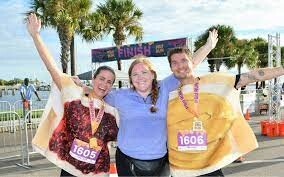
This beloved sammy can get a bad wrap as housing unhealthy and highly-processed ingredients, but, there are so many quality PB&J materials nowadays that you can feel good about whipping one up before or after a long training run.
Surprising no one, there are three ingredients in a PB&J. The bread, the peanut butter, and the jelly. Cool. Now that we have that out of the way, let’s talk about good options.
For years, shoddy “science” and a cultural gluten panic has maligned bread as “bad carbs”. However, studies show that whole wheat bread can not only be part of a healthful diet, but can reduce the risk of heart disease in adults. This is because whole grains contain essential vitamins like fiber, vitamin B, zinc, iron, and more. Plus, we as runners know how important carbs are.
A 2022 study followed dietary patterns of runners and found that those who ate whole grains over regular grains (white bread, white pasta, cereal) saw improvements in their runs.
It’s still a good idea to have a fair bit of skepticism when looking at breads in the grocery store aisle. Just because the packaging says, “Whole grains”, doesn’t mean it’s a good choice for your PB&J. Look for the 100% Stamp from the Whole Grains Council, which is a trusted third-party verifier.
You’ll also want to choose a bread that’s low in sugar (stick to six grams or less) and high in fiber.
A few examples of breads that meet these requirements are:
one slice - 110 calories
Did you know there’s a difference between jelly and jam? Jelly is made with strained fruit or fruit juice, whereas jam is made of mashed fruit. While the nutritional value of both are similar, their textures may dictate your preference. Jam often has fruit chunks in it, while jelly is smooth.
Jelly contains simple carbs and sugars, things runners love because of the ease of digestibility and quick hit of energy. Unfortunately, jelly can be high in added sugar and fructose corn syrup, so it’s best to keep an eye on the nutrition label when selecting this key part of the sandwich. That being said, sugar-free jelly is often made with artificial sugar replacements, which can cause digestive stress for some people.
You want to find a jelly made with natural sweeteners and little to no additives.An equally sticky and delicious ingredient to the PB&J is one many people steer clear from when trying to be health-conscious. But never fear! Peanut butter can be a great source of protein and healthy fats, both essential for a recovery from runs.
Some peanut butter brands often add in unnecessary additives and sweeteners to their products. Ideally, your choice should contain one ingredient: peanuts. Makes it easy, right? Look for natural peanut butters and don’t be alarmed by the oils sitting on top of a fresh jar. Simply mix before scooping.
As much as we stick to the humble, original PB&J combination, there are plenty of ways you, as a runner, can elevate your sandwich. For post runs, you can add banana slices for an extra dose of potassium and sprinkle flax seeds on top for healthy fats and extra fiber. If you’re more focused on quick, simple carbs before a run, replace bread with whole grain bagels instead.
For the more daring runners, try adding a splash of sriracha on top of the jelly and peanut butter. The heat cuts nicely with the sweet jelly and, when combined with peanut butter, tastes like Thai-inspired food. Yum.To a small saucepan on medium-low, add blueberries, chia seeds and water. Cook, stirring occasionally, until mixture takes on jam-like texture, about 10 minutes.
(06/19/2023) Views: 440 ⚡AMPby Outside Online
What You Need to Know About Running and Hearing Loss
How to handle—and prevent—this increasingly prevalent quality-of-life condition.
Last winter, I was one of eight people on a Sunday long run. We spent most of the run in four groups of two. When I got home and my wife asked about the run, I said I’d spent most of it beside Erin, an ob-gyn who loves to discuss books. My wife asked about Erin’s recent work and reading list. I said I didn’t really know, even though we’d just spent more than an hour talking with each other. That is, unfortunately, the norm for me on group runs. I have a form of severe hearing loss One manifestation is that it’s extraordinarily difficult for me to follow a conversation when there’s competing background noise. That includes restaurants and movies with music atop dialogue. But it also means something like that group long run, where Erin and I were sandwiched by lively conversations ahead of and behind us.
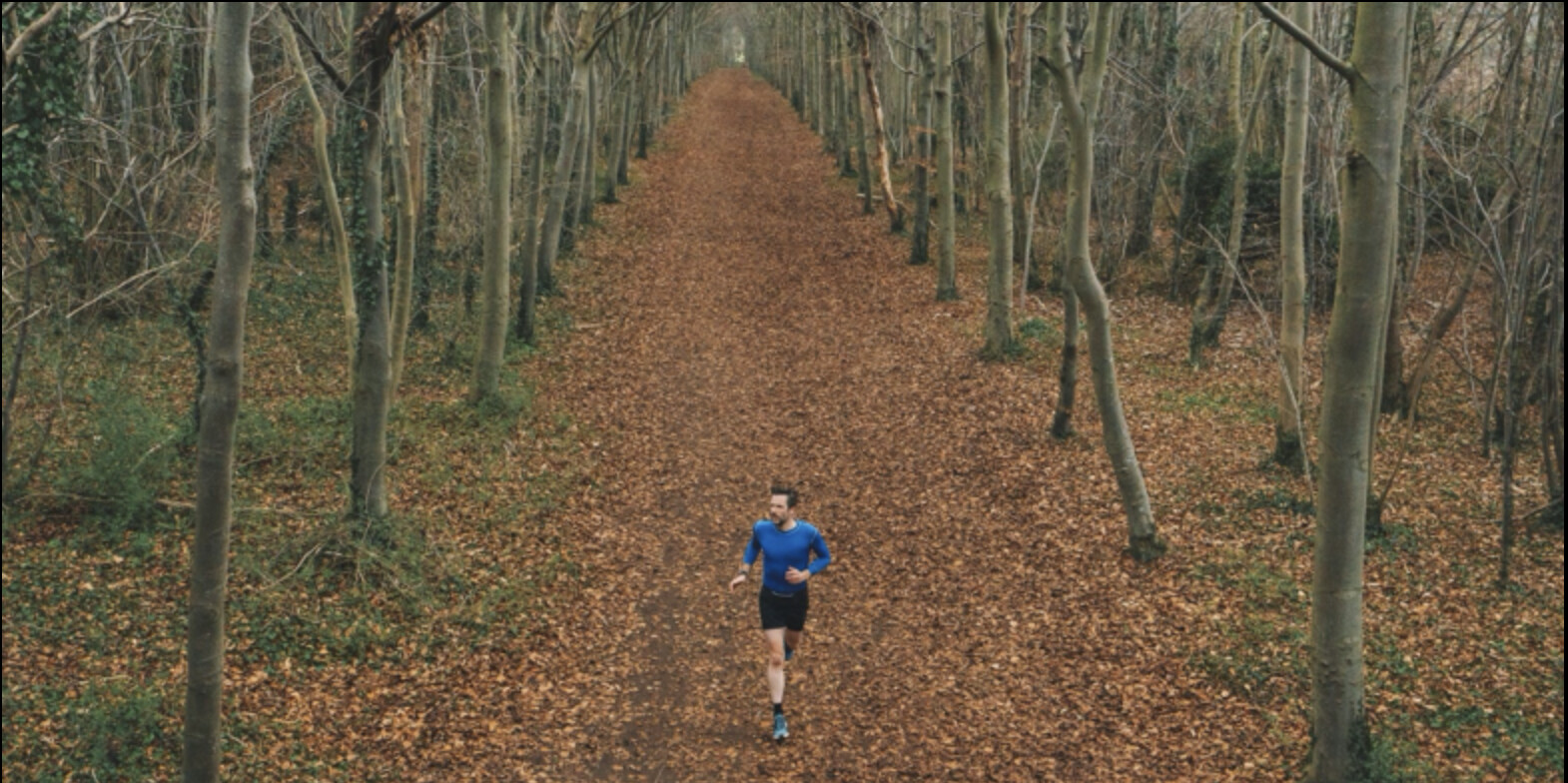
Hearing loss intrudes on nearly every aspect of my life. Some consequences are trivial (not hearing beeps from my running watch), some are moderately annoying (always seeking the quietest parts of public spaces), and some are depressing (regularly missing sounds and experiences that bring joy to others). There’s also the knowledge that my hearing is likely to continue to deteriorate, which puts me at risk for other conditions that could further erode my quality of life.
As the world gets increasingly louder, hearing loss is a growing problem. Here’s what it’s like to be a runner with hearing loss, what can be done about it, and, probably most importantly, how to lower your risk of winding up like me.
Running and Hearing Loss
Running’s health benefits are extensive and, in some cases, unexpected: Did you know that runners tend to have fewer cataracts and are less likely to develop glaucoma? Unfortunately, there’s no evidence that regular running helps lessen your chances of developing hearing loss. Indeed, as we’ll see, one key aspect of many runners’ routines can elevate their risk.
The most common type of hearing loss is sensorineural, in which there’s permanent damage to the inner ear or the nerve that connects the ear to the brain. Noise exposure and age are the two leading causes of sensorineural hearing loss. Between the din of much modern life and an aging population, it’s not surprising that 15 percent of Americans 18 and older report trouble hearing.
It’s also not surprising this is no longer just an older-person issue. “We’re seeing more kids high-school age with noise-induced hearing loss than in previous generations because it’s so prevalent to have things in your ears,” says Carissa McCauley, a runner and doctor of audiology at Rutland Regional Medical Center in Vermont. Research published last fall estimated that more than 1 billion people aged 12 to 34 are at risk of developing noise-induced hearing loss.
Hearing loss is inconvenient, for those with the condition and the people they try to communicate with, and, in some environments, unsafe. Untreated hearing loss increases your risk of cognitive and functional decline, social isolation, and depression, especially in middle age and beyond, according to Sarah Hill, a runner and audiologist who works for a hearing-aid manufacturer in Boston. McCauley adds that untreated hearing loss will likely get worse faster.
One tricky aspect of hearing loss is that it’s insidious. Without regular testing, you’re left with subjective experiences of poor communication: the restaurant’s music was cranked, it’s loud inside a car on the highway, your partner likes to conduct conversations from two rooms away. It’s easy to convince yourself the mishearing was a one-off rather than part of an increasing pattern. This is a different form of coming to grips than, say, realizing words on a page or screen are blurry enough that you need glasses.
The cause and progression of my hearing loss are fairly typical. As I teen, I played drums while wearing maxed-out headphones several hours a week. In my 20s and 30s, I saw hundreds of indie rock shows in bedroom-sized clubs. I often had tinnitus for a day or two after these exposures. (Tinnitus is usually defined as high-pitched ringing in the ears, which is an adequate description of mine, but it can present in many ways.) The tinnitus became permanent around 15 years ago. Then I had increasing difficulty following nearby conversations in loud environments. Also, being in such environments started to cause days-long spikes in the severity of my tinnitus. Finally, I found myself straining to understand my wife from even a few feet away in our quiet house.
Now, in my late 50s, I have profound loss at higher frequencies. This means not only that I miss out on things like bird songs and running watch beeps. I also struggle to distinguish certain higher-pitch consonants, such as “s,” “f,” and “h,” especially at the beginning of words. These problems compound when there’s a lot of background noise. It’s not that I can’t hear what others are saying as much as that I can’t quickly make out what’s being said. I guess at some words to see if they make sense in context. But by then people are on to the next sentence, and I’m still processing the previous one while trying to catch the gist of the current one and seeing if it’s reasonably linked to what I think the previous one was. It’s frustrating and exhausting. Sooner or later, I check out.
On runs, I often interject “uh huh” and “right” and “hmm” more in reaction to the tone of what others are saying than the content. If there’s reason to run single file, I scoot to the front to have any chance of following the conversation. If we’re running two abreast, I try to stay farther from traffic to lessen competing sound. If it’s just two or three of us, running with others can be my best hearing experience of the day. Rhythmic breathing tends to introduce pauses in conversation, giving me a better chance to process what’s being said. Large group runs are another matter. I’ve skipped many simply because I don’t feel like having to concentrate so hard just to follow along.
Are you on the road to hearing loss? McCauley and Hill agree that tinnitus is a major warning sign that you’ve been overexposed to noise. “That ringing is noise-induced damage, whether it goes away quickly or two days later,” Hill says. McCauley says that if you experience tinnitus after a given environment, “next time you need to wear hearing protection or avoid it if you can.”
Another warning sign is what’s known as a temporary threshold shift. “That means your hearing sensitivity has declined,” McCauley says. “Everything seems temporarily muffled. That’s another blaring red flag that you were doing something damaging and probably need to stop doing that.”
Constant tinnitus merits getting a hearing test from a licensed audiologist. “Most folks who have tinnitus have some degree of tinnitus,” Hill says. Other signs that you’re a good candidate for a hearing test include:
You frequently ask people to repeat themselves. (Or the people you talk with the most say you keep asking them to repeat themselves.)
You struggle to follow conversations when there’s background noise, such as other conversations, music, an air conditioner, or a television.
You have a harder time understanding children and women, who tend to have higher-pitched voices. Losing the ability to distinguish higher-frequency sounds is often where hearing loss starts.
You turn up the television volume but still can’t understand everything.
You feel like you hear better in one ear than the other.
You have issues with balance or dizziness.
Runners’ Risks of Hearing Loss
In a 2016 Runner’s World survey, 61 percent of respondents said they listen to music or other audio while running. That’s great, given the research showing the performance benefits of running with music. But that can also be problematic if you pump up the volume too much.
“If you have any ringing in your ears after running with music, it’s absolutely too loud,” Hill says. “Also, if you notice that, outside of being tired from running, you’re mentally fatigued in conversations or having trouble paying attention to somebody, it’s probably too loud. Those are signs that your brain is a little overstimulated.”
These recommendations, which are valid at all times, deserve a running tweak: Research presented at a 2014 conference on noise and public health looked at temporary threshold shifts after people listened to music while not exercising, exercised while not listening to music, and listened to music while exercising. The threshold shifts were significantly greater after listening to music while exercising, and included losses at high frequencies. The researchers speculate that decreased blood flow to the cochlea (part of the inner ear with a key role in hearing) during exercise can compound the problems associated with noise alone.
“My thought is, it should be a little lower than you want it to be,” McCauley says about the proper volume for on-the-run audio. “I tell my active patients to put the volume where you want it, and then turn it down at least a click.” This lower setting comes with a safety bonus of greater awareness of what’s going on around you.
Hill offers another solution: bone conduction headphones, which are worn outside your ears and transmit sound while avoiding potential damage to your inner ear. “It’s really hard to make those too loud,” she says. “They kind of max out naturally, so there’s much less of a risk of overexposure to noise.” Hill also appreciates how bone conduction headphones give her greater environmental awareness in busy Boston.
Hearing Aids for Runners
I haven’t been completely forthright so far in this article. The examples of struggling to hear are accurate—if I’m not wearing my hearing aids.
I had my first hearing test in 2007, after two intercontinental flights in three days made my tinnitus constant and more pronounced. The audiologist told me I had mild hearing loss at high frequencies and that it was likely I’d need to learn how to live with the tinnitus. I then waited 10 years for a follow-up. That visit resulted in a prescription for hearing aids.
This part of my story is also typical. Hill says that, when she was in private practice, everyone she recommended hearing aids for should have gotten them earlier, usually by a factor of several years. It’s estimated that at least 28 million Americans who could benefit from hearing aids don’t have them.
So why, as someone with hearing aids, did I struggle to hear my friend Erin during that large group run? Because I wasn’t in the habit of running with them at that point. The audiologist who fitted me with my first pair cautioned against getting them wet. When I told her I’m a ridiculously prolific sweater, she recommended not running with them. Over time, I wore them less and less in everyday life, because the inner ear portion made me feel like I was constantly being tickled by a Q-Tip.
This summer, I learned that, as with running shoes, a lot has changed with hearing aids in recent years. Water resistance is now a common feature. Smaller domes over the inner ear portion eliminate the tickling sensation. I’ve worn my new hearing aids on hours-long hikes and forgotten I had them in until I realized I was catching everything my wife said.
Most importantly, sound quality has improved dramatically. There was a metallic clang to what much of what I heard through my previous hearing aids. (Imagine water dripping on a taut piece of aluminum foil.) Now, I hear what I assume most people hear. Conversations are crisp. Music sounds full rather than compressed. I can sit on the patio and actually hear the birds and crickets that I know are just yards away. Restaurants are still annoyingly loud, but I can understand the people I’m with.
The hearing aids I have, the Phonak Audeo Fit, are also noteworthy in how they reflect two demographic trends—people are getting hearing aids at younger ages, and people are staying active later in life. The Audeo Fit tracks heart rate, daily steps, and time spent in different exercise-intensity zones.
Like most modern hearing aids, the Audeo Fit can connect to phones, televisions, and other gadgets, and it has Bluetooth connectivity. The latter is great, if that’s your thing. But I mostly value them for the human connectivity. Erin, the next time we run together, I promise I’ll really listen.
(12/31/2022) Views: 996 ⚡AMPby Runner’s World
Did You Know the Boston Athletic Association Has a Membership?
Joining isn’t as simple as you might think.
The 1983 Boston Marathon champion Greg Meyer is a member of the Boston Athletic Association (B.A.A.). So is Bobbi Gibb, women’s champion during the “pioneer era” of the marathon in 1966, ’67, and ’68.
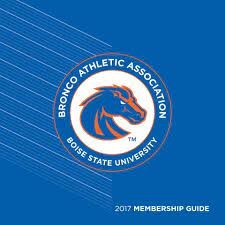
But Kathrine Switzer, who made headlines in Boston in 1967, is not. Nor is Meb Keflezighi, the 2014 champion.
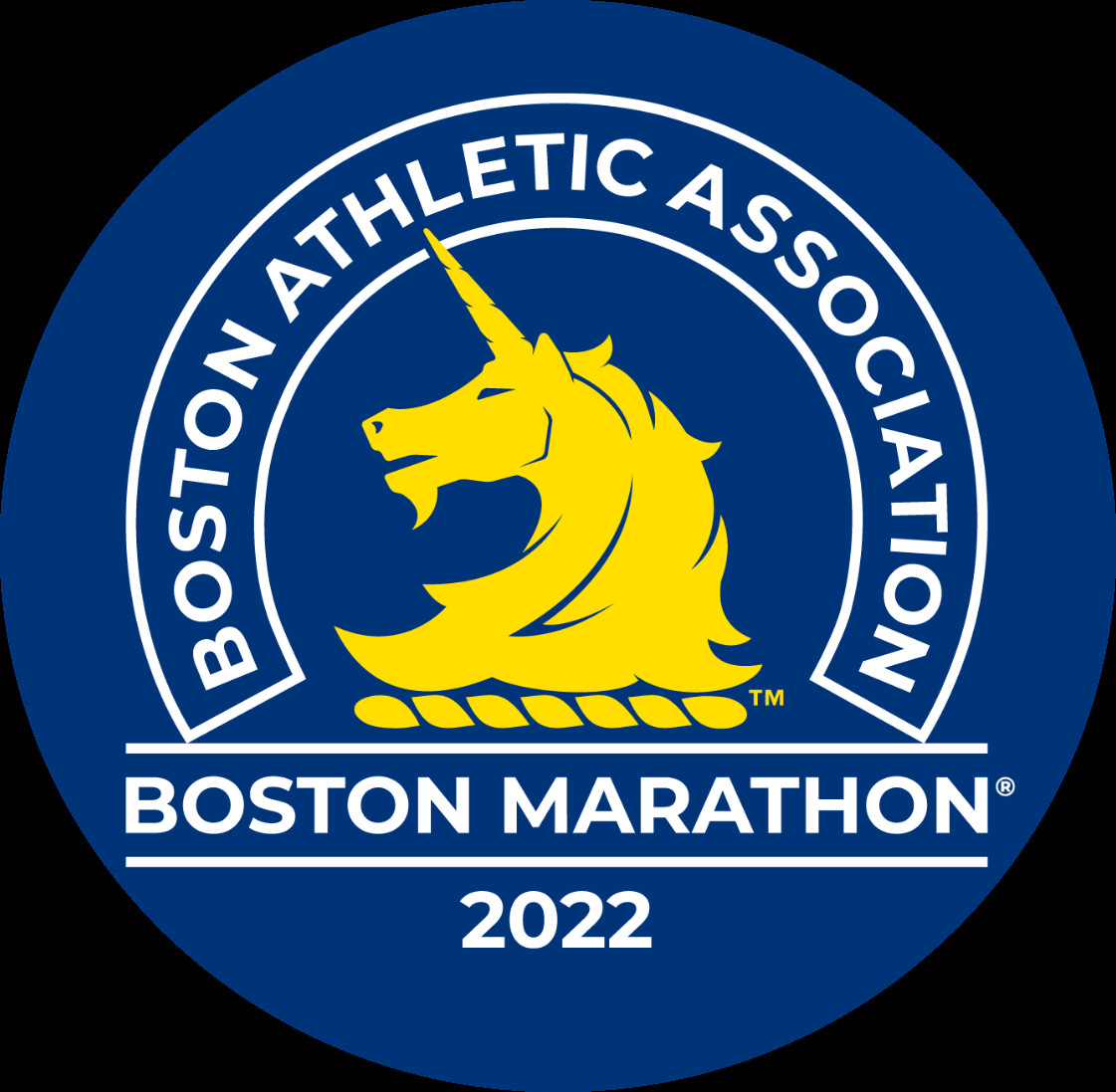
Tom Grilk, the CEO who retired in April, has been a member since 1987. The new CEO, Jack Fleming, is not.
Michael O’Leary, M.D., a surgeon at Brigham and Women’s Hospital and chairman of the B.A.A.’s Board of Governors (which is essentially the same as a board of directors) has been a member of the B.A.A. since 1989. All 13 Governors (10 men, three women) are members—they have to be, in order to be picked to serve on the board.
Scott Peterson, a Miami-area corporate finance professional, is a member, and he has his membership listed prominently on his LinkedIn profile. When asked by Runner’s World about it, Peterson, a marathon veteran, called the group “like-minded people who support the running community.” He said, “It’s a real honor for me and anyone to be part of the membership of B.A.A.”
But what is this selective group, exactly? Who are they? And how are they chosen?
A local mystery
Information about membership on the B.A.A. website is scant, which cloaks the group—intentionally or not—in secrecy. Several people who are deeply involved in the Boston-area running community told Runner’s World they did not know such a group existed. (There is also a B.A.A. Running Club, which is open to runners in the Boston area, but it is different from the membership.)
Chris Lotsbom, a B.A.A. spokesperson, answered multiple questions from Runner’s World about the membership via email. He said the group currently has 174 people.
He also explained that the membership model goes back to the B.A.A.’s founding in 1887. The marathon started 10 years later, in 1897.
The organization had, in its earliest days, a building with a pool, indoor track, bowling alley, and boxing room, among other amenities, like a golf club, for its dues-paying members. The B.A.A. was similar to other athletic clubs across the country, most notably the New York Athletic Club, which still exists.
In the 1930s, during the Great Depression, the B.A.A. lost its headquarters building and its other properties. All that remained was the marathon, the bylaws of the organization, and a small group of members.
The members kept the B.A.A. and the marathon going. And they remain to this day, written into the organization’s bylaws to promote “the common good and the health and welfare of the general public and the encouragement of the general public to improve their physical condition.”
Tom Derderian, executive producer of Boston: The Documentary and author of Boston Marathon: Year-by-Year Stories of the World’s Premier Running Event, takes a skeptical view of the leadership back in the day.
“The B.A.A. expected that their investments in the 1920s would continue to grow,” he wrote to Runner’s World. “The stock market crash and Depression and World War II removed all B.A.A. assets, leaving the Association with only its name, an indoor track meet, the Boston Marathon—and the founding attitude that only B.A.A. members could know what was best.”
The modern-day membership
Today, as with any group, some members are actively engaged in day-to-day matters of the organization, attending meetings, voting, lending expertise, or volunteering at B.A.A. events. Others are not involved at all.
“For us today, membership is a valuable asset when tapped into,” Fleming said in a call with Runner’s World. “There’s still work to be done, but leadership and staff rely on the members for a variety of things. They serve on committees. They provide guidance in areas, their expertise. So finance, real estate, of course, running, community, the professional side, technology.”
For example, when the B.A.A. wanted to buy a building in Hopkinton near the marathon starting line, the organization got real estate advice from some of the members during the process.
They have also helped with recent diversity initiatives.
“Several B.A.A. members were significant in the establishment of the Boston Running Collaborative, which seeks to increase the fitness and participation of minorities in running,” Lotsbom wrote. “In this respect, membership is a resource which complements the staff’s day-to-day work.”
The way the bylaws are written, the Board of Governors are nominated from the membership. So the 174 members influence the direction of the B.A.A. through the Governors, who oversee the CEO.
The B.A.A. doesn’t track the demographic makeup of the membership, but Lotsbom wrote that, since 2010, the group has attempted to improve its diversity.
Thaddeus Miles, who founded the Run to Wellness 5K in Roxbury several years ago, was invited to join the membership two years ago by Tom Grilk. Miles recently showed up at his first in-person membership meeting post-pandemic. He counted only one other Black member among what he estimates were 50 attendees, plus Adrienne Benton and Keith McDermott, who are on the Board of Governors.
Three people who are familiar with the membership said that many members work in the medical professions or financial services industry in the Boston area.
There is a family component as well, according to the B.A.A. O’Leary’s father, also a physician, was a member of the B.A.A. who was responsible for the physicals administered to marathon runners in Hopkinton during the race’s earlier years. A descendant of Walter Brown, who founded the Boston Celtics and was the B.A.A. president from 1941–64, still starts a division of the marathon to this day.
Members pay a nominal fee—$50—each year to belong. In exchange, they get one waiver each year into the marathon. They still have to pay the entry fee ($375), but they can run themselves without qualifying, transfer the waiver to a friend or family member, or donate the number to a charity.
Miles, who is on the steering committee of the Boston Running Collaborative, gives his waiver for a marathon entry every year to a runner of color who otherwise wouldn’t be able to qualify for the race.
For the thousands of runners every year who try to qualify but fail, or who fundraise for one of the charity teams as a way of gaining entry to Boston, the existence of a small membership group might rankle. Lotsbom said fewer than 180 entries are allocated for members annually (out of a field size of 30,000) and less than half are ultimately used.
“The B.A.A. gets to choose whom they want to invite to run the race, and the B.A.A. decides the terms by which it will invite people to participate in its iconic annual event,” said Robert Wang, the founder of the World Marathon Majors Challenge group on Facebook. (The group’s 18,000 runners are seeking to run all six of the Abbott World Marathon Majors, but they have no official affiliation with that organization.)
“If the B.A.A. wanted to invite everyone whose last name starts with ‘Y’ to run the Boston Marathon, that would absolutely be the organization’s prerogative,” Wang said.
I’d love to be a member. How do I sign up?
There’s the rub. Right now, no such sign-up mechanism exists. You have to know a current member or someone on the Board of Governors.
“Potential members are traditionally nominated by a board member or another current member, and apply with a résumé along with specific comments as to why they wish to join the B.A.A.,” Lotsbom wrote. “From there, the nominees are seconded by a Governor, and voted on by the board. The membership is made up of those who have expressed an interest in the B.A.A., B.A.A. activities, and its mission.”
Fleming acknowledged that the relative obscurity of the membership and the lack of clear guidelines for becoming a member could be improved.
“We should make it known more,” he said. “And we should have more public ways of making it easier to have their interest become known. Raise your hand. We should make it easier for that to occur.”
In an era when running’s leaders are trying to make the sport more inclusive, how does the B.A.A.’s membership fit into the landscape? Is it a quirky echo of the organization’s past? Or an impediment to diversity in today’s world? Does a quiet group of invitation-only members pass the sniff test in 2022?
Tiffany Chenault, a sociology professor at Salem State University who is an ambassador for the Boston chapter of Black Girls Run and part of the Boston Running Collaborative, said in a call that she didn’t recall hearing about the membership, and she wondered how much influence the group holds.
“I’m curious,” she said. “I have questions.”
John Hanc, a longtime Runner’s World contributing editor and author of The B.A.A. at 125: The Official History of the Boston Athletic Association 1887-2012, knew of the group’s role in the B.A.A.’s founding, but he didn’t realize it still existed.
“Today we know the B.A.A. for the marathon and its other major running events,” Hanc said.
“But we have to remember that its history is rooted in the 19th century. Back then, it was very much an athletic club, with all of the exclusivity and, by 21st century standards, perhaps unnecessary and stuffy protocol that came with institutions like it at the time. Over the decades, the organization has morphed into a powerful force in the modern running movement. But some vestiges of that past still remain. While we of course want to see greater diversity in every aspect of the sport, this remnant of the old B.A.A. strikes me as fairly harmless.”
The B.A.A. in 2022 is facing very modern challenges, however. John Hancock, the longtime marathon sponsor, announced that 2023 would be its final year. Will a company want to replace Hancock? And critics have said the B.A.A. has been slow to embrace diversity in its ranks and events. Where does the membership group fit into that?
Does a leadership structure that evolved from the 19th century, and with a Board derived from a membership group, still serve the organization?
Derderian isn’t certain.
“It is a human tendency for those in charge to conclude that only they know enough to be in charge, since they have always been in charge,” he wrote, “and to keep things from changing, they have to continue to exclude control from outside.”
(12/11/2022) Views: 667 ⚡AMPby Runner’s World
How to prevent dehydration at your next race
It’s no secret you need to be well hydrated to perform your best, but did you know that being hydrated for a run should start far before the gun fires on race day and continue long after you cross the finish line?
According to Runner’s World Magazine, in warm or humid environments, being more than two percent dehydrated can cause a decline in your running performance. Dehydration causes your blood flow to drop, decreasing your body’s ability to transfer heat, and forces your heart to beat faster. This is when your body starts to shut down and your ability to cross the finish line becomes much more difficult.

In addition to your training schedule, incorporate these hydration tips before, during and after your run. And always remember to listen to your body because proper hydration will depend on the heat, soreness and distance.
Before you hit the pavement

In the days leading up to your run or race, drink plenty of water and nonalcoholic drinks. Alcohol dehydrates you and can prevent you from getting a good night’s sleep, a critical aspect of a pre-race routine.
An hour or more before your race begins, drink about 16 ounces, or two cups, of water. Be sure to stop drinking at this point so you don’t have to go to stop to use the restrooms along the race!
Right before the start of the race, you can drink a half to a full cup of water to ensure you’re still properly hydrated, if desired.
During the race
Hydration while out running is simple: drink if thirsty. Research has shown this approach helps to prevent under hydrating, which leads to dehydration, as well as over hydrating. However, a general “rule of thumb” during your run is:
For every 20 minutes of running, drink 4-6 ounces (roughly one cup) of water.
If you run faster than an 8-minute mile, it is recommended to drink 6-8 ounces (more than one cup) of water every 20 minutes.
When you are running for 90 minutes or more, adding a sports drink to replace the lost sodium and electrolytes will help you absorb water faster and stay hydrated longer.
After you’ve crossed the finish line
Most experts believe you should drink at least three cups of water after you have finished a run or race. However, flavored or protein drinks such as iced green tea, coconut water, chocolate milk or a low-fat smoothie are also excellent options post-run.
(11/17/2022) Views: 736 ⚡AMPby A Healthier Michigan
Jemal Yimel and Ruti Aga, added to 2022 Chicago Marathon elite fields
The 2022 Bank of America Chicago Marathon got a boost in quality yesterday when race organizers announced some significant additions to the elite fields, led by Ethiopian national record holder Jemal Yimer on the men’s side and 2:18:34 marathon Ruti Aga on the women’s side. Aga is the more accomplished marathoner but she is the bigger question mark as she dropped out of New York last year and hasn’t raced at all in 2022 whereas Yimer, who has recorded marathon finishers only in Boston (3rd and 8th the last 2 years), has been on fire on the roads this summer.
Below we show you the new additions to the elite fields (We present them in order from most likely to win to least likely) and after that you will see the full elite fields.
The 2022 Bank of America Chicago Marathon got a boost in quality yesterday when race organizers announced some significant additions to the elite fields, led by Ethiopian national record holder Jemal Yimer on the men’s side and 2:18:34 marathon Ruti Aga on the women’s side. Aga is the more accomplished marathoner but she is the bigger question mark as she dropped out of New York last year and hasn’t raced at all in 2022 whereas Yimer, who has recorded marathon finishers only in Boston (3rd and 8th the last 2 years), has been on fire on the roads this summer.
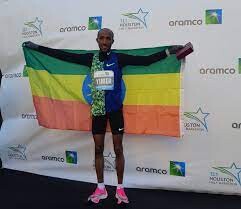
Below we show you the new additions to the elite fields (We present them in order from most likely to win to least likely) and after that you will see the full elite fields.
Men
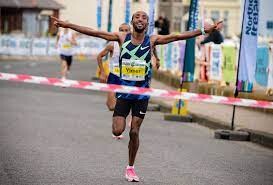
Jemal Yimer (ETH) – 2:08:58 pb (Boston, 2022). 26-years-old. Half marathon ace. 26:54 10,000 pb. Ethiopian national record holder in the half marathon, 58:33, which he ran in Valencia in 2018. Trivial: Did you know 12 Kenyans have run faster than that? His two marathon finishes have been in Boston where he was third in 2021 and 8th this year. In good form this summer. 3rd at Peachtree (27:50), 1st at Boilermaker (42:38), 1st in Larne half in 59:04 on August 28th.
Shifera Tamru (ETH) – 2:05:18 pb. Only 23. Won Seoul in 2019 (2:05:29) and Daegu (2:06:31) earlier this year. 5th in Chicago last year. Has ran under 2:06 in 4 of last 5 marathon.
Bernard Koech (KEN) – 2:04:09 pb (Amsterdamn 2021). 34-years-old. Has 5 times run run under 2:07 incluing twice in the 2:04s including in his debut in Dubain in 2013 without super shoes. Has never won a marathon but was s2nd in 2021 Amsterdam and 2014 Rotterdam. No races at all in 2022.
Guojian Dong (CHN) – 35-years-old. Three-time Olympian (2012, 2016 and 2020 marathon); five-time national champion on the track in the 10,000 and 5000m; marathon personal best 2:08:28 (Berlin, 2019). Chinese record is 2:08:15.
Women
Ruti Aga (ETH) – 2:18:34 pb (2018 Berlin). 28-years old. Hasn’t broken 2:20 in her last 6 marathons since running 2:18 in Berlin but did win Tokyo in 2019 in 2:20:40. DNF in NY last year. No results in 2022. Also 2018 Tokyo Marathon and Berlin Marathon runner-up.
Delvine Meringor (ROU) – 2:24:32 pb. 30-years-old. Former Kenyan. 2022 Los Angeles Marathon champion, and 2022 Romanian national champion in the 5000m and 10,000m.
Sarah Inglis (GBR) – 2:29:41 pb (Chandler, 2020). 31-years-old. 2022 Commonwealth Games competitor in the 5000m and 10,000m.
Elisha Rotich (KEN), Abayneh Degu (ETH), Amanuel Mesel (ERI), Masaya Taguchi (JPN), Jianhua Peng (CHN), Shaohui Yang (CHN), Steven Martinez (USA) have also been added to the 2022 elite open division race. Fidel Aguilar (MEX), Jose Pulido (USA) and Hannah Dederick (USA) have been added to the 2022 elite wheelchair competition.
(09/29/2022) Views: 720 ⚡AMPby Letsrun
Bank of America Chicago
Running the Bank of America Chicago Marathon is the pinnacle of achievement for elite athletes and everyday runners alike. On race day, runners from all 50 states and more than 100 countries will set out to accomplish a personal dream by reaching the finish line in Grant Park. The Bank of America Chicago Marathon is known for its flat and...
more...Want to become a stronger runner?
There’s nothing quite like the satisfaction that you feel after a great workout, or a sporting match, but during these tumultuous times your options are limited to experience that endorphin release. We know exercise is essential, not only to your physical health, but also your mental health, so what better way to get the heart pumping then to hit the pavement and go for a run?
Depending on the research you read, as many as 8 out of 10 runners will get injured over the next 12 months. We can assume this number may even be slightly higher due to the current circumstances. Most will currently spend days in an office chair and in front of a screen. Long periods of inactivity, poor posture and hectic lifestyles are hardly conducive to injury free running.
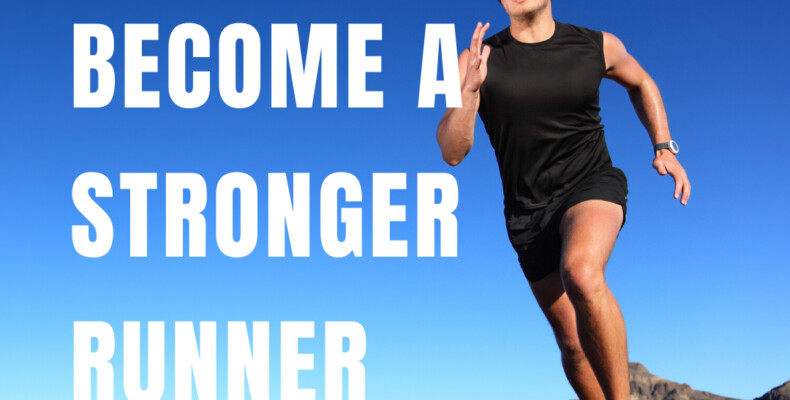
So, how do you make sure your body is strong enough to cope with the increase in running load, and the different muscles you’re going to use? Luckily, we have 7 top strength tips to keep you injury free and to keep those legs ticking over as you watch your exercise ring close!
1.Add strength training to improve power

While this tip may seem simple, a good training program for runners isn’t just about logging your miles. Strength work accomplishes three big goals for runners. Not only can it help bulletproof your body to help you prevent injuries by strengthening muscles and surrounding tissues, but strength work will help you run faster by improving your neuromuscular control, coordination and power. Additionally, it improves running economy by encouraging coordination, appropriate activation of muscles and improves balance!
2. Do compound and functional movements
Compound and functional exercises work multiple muscles groups across multiple joints at the same time. We’re talking squats, deadlifts, paloff press, Bulgarian split squats, and the list goes on! Training multiple muscle at a time teaches multiple muscle groups to coordinate their activation and firing rates, which is vital to effective running. It is important to implement a mix of upper and lower body exercises as well as core work. Additionally, these movements improve dynamic flexibility, muscle coordination and have substantial cardiovascular benefits.
3. Strengthen your weaknesses
Did you know that your glutes and calves are the two powerhouse muscles that push you forward when you are running? And they activate in different ranges and planes? Also, did you know that almost every muscle activates when you run? Even those forehead muscles as you frown your way through the middle of your run! It is important that it is identified where individual weaknesses occur, in what ranges, and with what activation patterns to ensure your strength program improves what you need. Specificity is KEY!
4. Schedule your strength sessions
In a perfect world, a runner should beef up their strength work in the off-season and then reduce the load as they go into the season. For most runners, 2-3 days a week of strength training is sufficient, but it is important to be strategic about when you schedule them. Generally having at least one day in between your strength days is important to allow your muscles to recover. Additionally, you should avoid any type of strength work prior to your running workouts. Either plan on doing it right after a run or later in the day after you’ve completed your endurance training.
5. Build your load slowly
The golden rule to loading with running: increase weekly training mileage by no more than 10% per week, this is the same with strength work. It’s important that strength and conditioning sessions are not viewed like a HIIT class. Runners should start with a few exercises done slowly and with good technique, and gradually increase repetitions, sets and alter tempo. The body adapts best to working multiple muscle groups, so add a variety of exercises to get the full benefit.
6. Don’t try anything new on race day
Lets all put our hand up. Who has been tempted to try something new on a race day or longer run day? The temptation is real, and it’s strong! Race day nerves or the desire to take a few seconds off a PB are both reasons runners might try something different when it matters most. Any level runner should avoid this temptation and stick to what has been implemented in training. Don’t play Russian roulette and change what is working on the day.
7. Must train the whole body
Running requires a solid foundation. While you may think you are simply relying on your legs to power you forward, when you run, your abdominal and back muscles activate to stabilise your spine. Additionally, your arm drive is an integral part of good running mechanics. When your legs tire during a run, your arms pick up the slack through the kinetic chain so you can complete that 5km under that 30-minute mark!
While all of these tips can be applied easily, you need to remember that each person is different! Your body is not the same as the person striding out on the opposite side of the road. Whether you are a competitive runner or just starting out, looking after your body is essential for longevity in running and maximum enjoyment.
(09/26/2022) Views: 740 ⚡AMP
by Carlingford Active Health
How to create a runners first aid kit
Most runners are familiar with the term “runner’s high”, which is often used to describe the feeling one gets right before an amazing race. However, this term is also appropriate for describing something entirely different: putting together a first aid kit for runners.
A runner’s first aid kit is commonly neglected because it seems like they’re mostly filled with band-aids and sports creams, but they’re actually brimming with potential injuries that could be common in runners. In this article, let’s share ways to create a first aid kit.
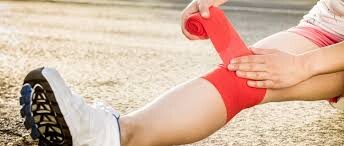
Get an up-to-date first-aid manual
If you are into running, then it is possible that at one point in time or another you may get yourself injured. It’s the nature of the activity, and there isn’t much we can do about it. But what we can do is ensure that if we get injured, we have a way to fix ourselves up without too much fuss. And for this, the best way to ensure that you are covered is to have a first-aid kit around.
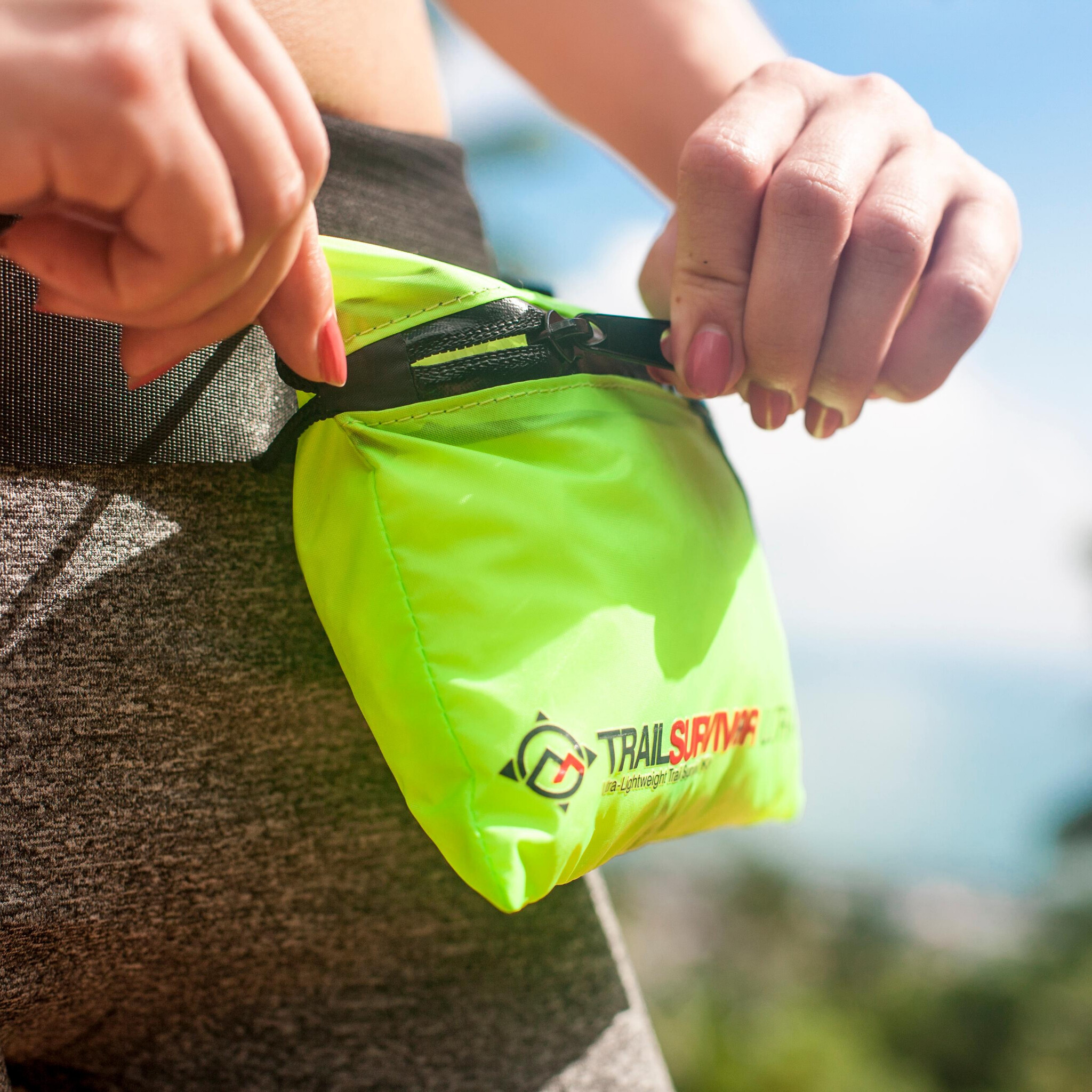
The hardest part about creating a first aid kit of your own is getting your hands on some good-quality equipment and supplies. The first step towards building your kit is to get an up-to-date first-aid manual that can provide you with all types of information about how to handle yourself in case of an emergency.
Brace and support supplies
Braces and support supplies like orthopedic tape and Kinesiology Taping (KT Tape) can be really useful in the treatment of running injuries. As a runner, you know how important it is to be able to provide first aid for yourself when you get injured during your run, whether that’s on a trail or on the road.
As a runner, you might have seen orthopedic tape and braces in a drugstore or pharmacy, but did you know what they’re for?
Orthopedic tape is great when it comes to injuries like sprains. It can help keep body parts in place. Simply, orthopedic supplies provide support to weak or sore muscles. It helps decrease pain and swelling when you get injured by providing support to the area of injury. You can use it for everything from preventing blisters, to helping with sprains, strains, and other common running injuries.
Add a list of emergency phone numbers
Adding a list of emergency phone numbers when creating a first aid kit for runners can be helpful in some circumstances. You can start this list with the phone number of the closest hospital or medical center, and then add other numbers based on personal preferences. It is important to keep in mind that runners will be carrying these numbers with them wherever they go while running.
Don’t forget antiseptic wipes
When a runner is training for a race, they may notice soreness and swelling on their feet. It is important to have first aid supplies on hand in case of an injury. A well-stocked first-aid kit for runners includes bandages, antiseptic wipes, and antibiotic ointment. Antibiotic over-the-counter creams such as Neosporin can be purchased at any pharmacy or drugstore.
A simple way to remember what a runner should put in a first aid kit is ‘ABC.’ This means antiseptic wipes, bandages, and antibiotic ointment. Antiseptic wipes are not only useful for cleaning small cuts, but also preventing infection on blisters.
Aids for Prevention of Abdominal Cramps for Runners
When creating a first aid kit for runners, runners should consider including aids for the prevention of abdominal cramps for runners, as well as other items that may be needed during a run.
Most kits also include pain relievers or analgesics such as ibuprofen or aspirin and tape, gauze, and antiseptic wipes to treat minor scrapes and blisters. Adding aids for the prevention of abdominal cramps to a first aid kit may help ensure that there is a relief for this issue during runs.
Abdominal cramps are one of the most common reasons why people stop running in the middle of a run, especially if they ignore them at first, thinking that they will go away.
Painkillers
Running takes it out of the body, and painkillers are important to help control discomfort afterward. While taking them unnecessarily can be harmful to health, they’re vital for recovering safely after a run.
The most common painkillers include ibuprofen and paracetamol. Ibuprofen is better for inflammation but can cause gastrointestinal discomfort in some people. Paracetamol has fewer side effects in general, however, it may not be strong enough to reduce certain types of pain.
There are many first aid supplies that are useful for runners to have on hand when they travel. A well-stocked first-aid kit for runners should include bandages, antiseptic wipes, and antibiotic ointment. It is also important to add a list of emergency phone numbers and lists of dietary supplements and medications.
(02/21/2022) Views: 868 ⚡AMPby Colorado Runner
Will a strong core improve your running performance?
Do you want to improve your running times? Besides endurance and well-trained legs, a solid core is extremely important for your running performance. Many runners, however, are unaware of how much they can benefit from having strong abs and back muscles.
IMPROVE YOUR RUNNING PERFORMANCE
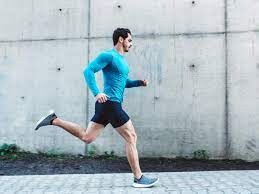
Running basically consists of constantly shifting your weight and changing support from one leg to the other. Stable posture, which is necessary for running efficiently, is provided, on the one hand, by the skeleton and, on the other, by the muscles that connect the spine with the shoulder girdle and the pelvis. The most important muscles for stabilizing your trunk are your abs and your back muscles.
What happens if your core muscles are weak? You will make unnecessary movements when you run, thus decreasing your forward propulsion. A stable upper body ensures an efficient transfer of force directly to the ground. The more economical your running technique is, the less energy you will waste and the faster you will be.
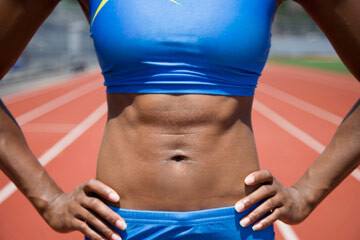
PREVENT OVERUSE INJURIES AND OTHER RUNNING-RELATED INJURIES
When you run, your body is subjected to forces 3 to 4 times your own body weight. Studies have shown that many of the back problems reported after running are due to underdeveloped core muscles.
Did you know that marathon runners are up to three centimeters shorter when they cross the finish line than they were before the race? This curious phenomenon is due to the many small impacts to the spine during the race, which cause the intervertebral discs to lose fluid and thus shrink. This also reduces the disc’s ability to absorb shocks. But don’t worry! As you sleep, the intervertebral discs recover, fill back up with fluid and expand to their original size.
On a much smaller scale, this process takes place during each of your running sessions. Well-developed abs and back muscles support your spine and protect you from overuse. The more conditioned your core muscles are, the longer you will benefit from their stabilizing effect.
(10/21/2021) Views: 791 ⚡AMPby Herwig Natmessnig
Unconventional and creative ways that you never thought could help you in shape
They tell us that keeping in shape is all about hard work, dedication, and sticking to a strict diet. This is only somewhat true, as indeed this will give you a fit and healthy body if you are persistent enough, though that is not the only way of doing it. A bit unconventional, but there are things you can do to stay in great shape that does not fit into the previous list of activities.
Things like eating more, clubbing, and sleeping don’t come to mind when thinking about fitness, yet they can indeed help us get and maintain a lean body if applied correctly. See what else you can do below, and we’re sure you haven’t thought of at least one of those on the list.
A Corset-Like Figure
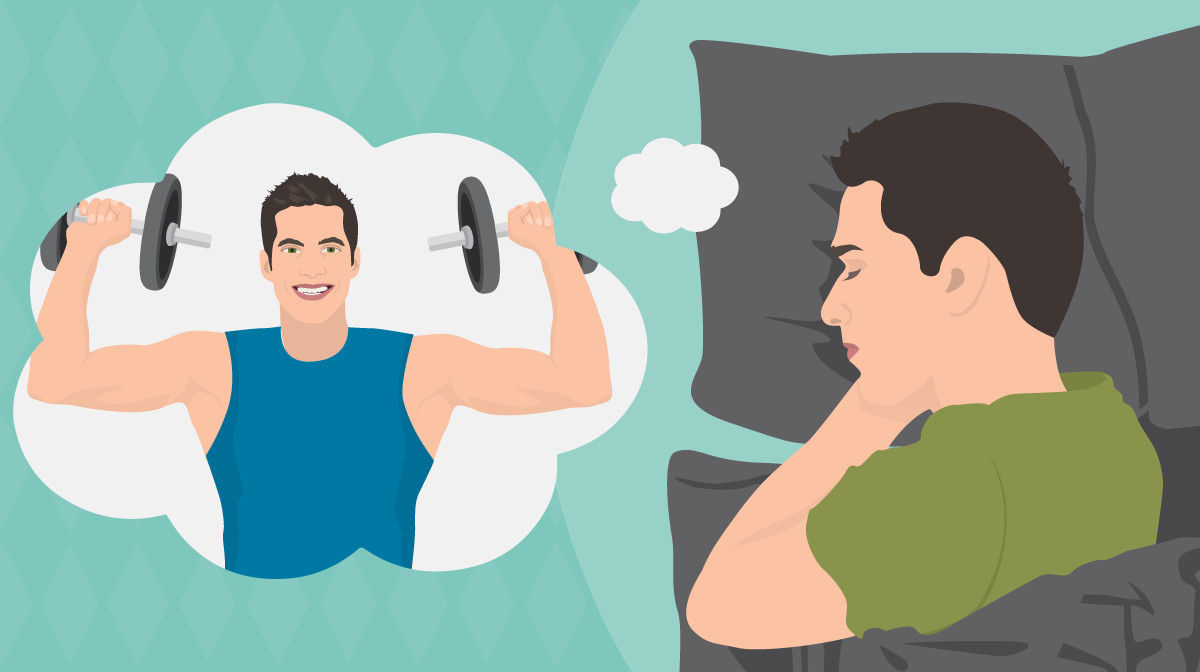
A very famous silhouette, showing up every few centuries but having its peak in the female corset of the Victorian era, reminds us mostly of an hourglass figure. Or a pigeon breast and a wasp waist, if you will. This idealized body is of course unobtainable naturally, and can only be achieved by wearing tight-fitting clothing or via some surgery. But considering how a narrowed waist helps stabilize the spine, there is a certain benefit here.
Heavy weightlifters carry a similar type of clothing – a weight belt, that helps keep the back straight during deadlifts and squats. Wearing similar narrow-waisted clothing will not only give you proper posture but will also push your stomach in a bit thus restricting your appetite. Just make sure to keep the chest unbound, as restricted breathing is not a good thing.

Sleep Your Way to a Fit Body
While we sleep, a lot is happening to our bodies, even though we are presumably only resting and lying down. Sleep is needed for our muscles to recover after heavy exercise or labor, and for our mind to rest from all the thinking we’ve been doing.
Though depending on how old you are and what you do, you will need different amounts of sleep to become fully rested. You can try out this sleep calculator to see what fits you best. Getting too little sleep is detrimental to your health and should be avoided. As we sleep or rest, the muscle tissue that has been micro torn during physical activity regenerates to build bigger and stronger muscles. So exercising too much and having too little rest will not bring you any good body-wise.
Eat More!
Absurd as it may sound, there are scenarios where eating more is good for staying in shape. There are two cases for this, different but with some overlap. If you are underweight, as was the case with people for many centuries until the current age, then eating sufficiently is not only good for your organism to get all the nutrients and energy it needs, but to build up a pleasant-looking outside too. Proteins in food help build muscles and organs and are therefore essential in any diet. It would be very difficult to completely avoid proteins in a normal diet because finding protein-rich food is rather hard. But turning to tuna, chicken breasts, or lean beef – you can get plenty of protein in and your body will naturally start placing the proteins where they need to go, thereby keeping you nicely toned. And even vegans have alternative solutions for this, as some plants can have huge amounts of protein in them as well.
Setting a Clock Diet
Diets that restrict what we eat are the most common thing we turn to when we have to lose some weight. Paleo, low-carb, vegan, and so forth. But a clock diet is different, in that it is made so that you can eat whatever you want but are restricted to when you can eat it. Not perfect in itself, it does have some very compelling arguments for it.
Our digestive system has evolved to follow a certain rhythm of life, day and night, and so forth. And although our eating habits have considerably changed, some parts of the digestive system are still the same. It takes a lot of time to digest some foodstuff, mainly meat, so timing your meals to have enough space between them is very beneficial for the body. Restricting yourself to not eat anything from, say, 7 PM to 6 AM gives you plenty of time to fully digest everything in your stomach and use it as it needs to be.
Make House Chores An Exercise
Chores await us every day in various amounts and don’t magically disappear just because we ignore them. And even though most of us would rather spend the time hanging out with friends or going for a walk – some things just need to be done sooner than later. But why not make it useful in more ways than one?
Studies show that doing household chores could improve your health, equaling in some cases to the same benefit as regular exercise. Not only that – they can also be an exercise on their own, giving you a workout when you would otherwise be bored. Squatting while taking out the dishes, planking while vacuuming, running for groceries… the number of possibilities is endless.
Dance Until You Drop
Clubbing is mostly associated with having fun and meeting new people, not staying in shape, but did you know that dancing burns a lot of calories? And dancing is what going to clubs is all about. Certain gigs will get you pumped up for jumping more than others, but even slow-paced music allows for long and graceful dancing that makes you break a sweat.
Of course, many people will also be drinking alcohol, which is very caloric, and will eat some fast food afterward, which is even more caloric! But limiting for yourself these two things can work wonders in terms of staying fit while also having fun partying.
These six unconventional and creative ways of keeping you in shape are what everyone needs when they normally don’t have the time to work out or the willpower to go on a diet. They are easy to do and only require a bit of organizing. So good luck with them and you’ll see results in no time.
(06/07/2021) Views: 811 ⚡AMPby Colorado Runner
The science behind the runner's high
Have you ever finished a run and felt like you could take on the world? Or returned from a jog in a better mood or with greater mental clarity than when you set out? Then you’ve likely experienced the ‘runner’s high’ and will understand why, during times of stress or needing to calm a busy mind, running seems the perfect remedy.
“It begins with this peace of mind and then a greater ease of movement, a sense of power and confidence, optimism and hope, and you will often hear runners describe feeling loving and connected to everyone and everything,” explains Kelly McGonigal, a psychologist, educator and author of The Joy of Movement. “So, what could possibly be going on in the body and the brain that would make you feel powerful, hopeful, faster, more confident and more loving?”
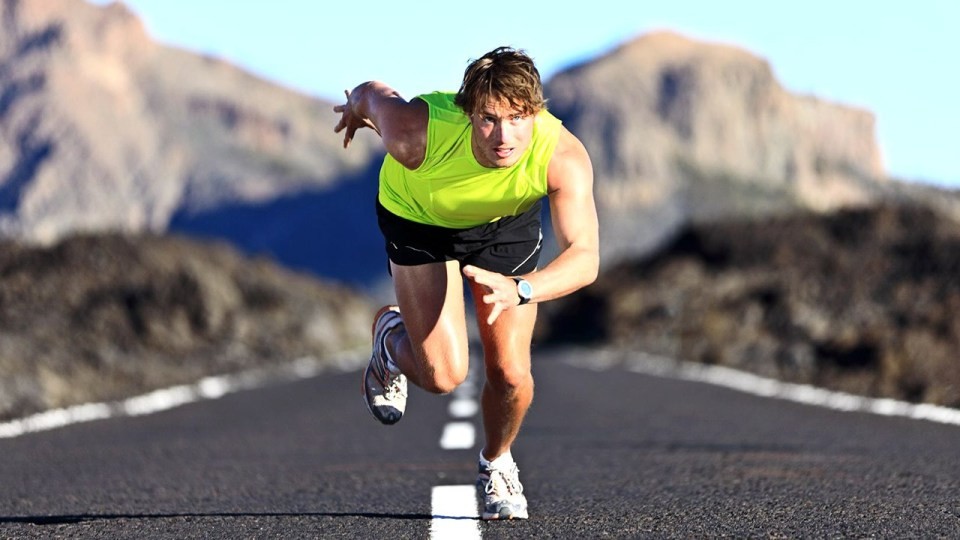
Speaking during this week's World Athletics 'Run Anywhere' Webinar in collaboration with Mass Participation World, McGonigal answered that question, plus many more.
“It turns out that it’s caused by a really reliable change in brain chemistry that kicks in once you have been in continuous motion for about 20 minutes and it’s not only the endorphin rush that so many people have heard about,” McGonigal explains, as she delves into the science behind the runner’s high.
“The runner’s high is primarily driven by endocannabinoids, which are the brain chemicals that cannabis mimics, but when you are running and endocannabinoid levels naturally increase, that is what produces this powerful sense of an inner peace, empowerment and connection to others.”
Run to become a better you
“The thing that I find so fascinating about the runner’s high is it is like the perfect neurobiological change to make you a better version of yourself,” McGonigal tells Chris Robb, CEO and founder of Mass Participation World, during the webinar. “I think that is why so many people go for a run and then they feel like they can take on the world.
“And it lasts for hours. So even though you might only feel that peak high during a run or just after the run, we know that those brain changes last and they create this upward spiral, so people often report feeling less stressed, getting more things done and having better interactions with other people, for hours after a run.”
Hunting that high
“There are a few things you can do if you want to get the high a little bit faster,” McGonigal says. “For example, listening to music early in a run can actually kick start the process – release more endorphins and dopamine and adrenalin – so that you can start to feel some of that high sooner.
“The more you run or exercise, your brain actually learns how to more reliably produce that high. Part of that is because exercise, and running in particular, has this interesting effect on your brain where it strengthens your reward system and that includes endocannabinoids and endorphins. All the brain chemicals that make you feel good and that help you be motivated – exercise actually strengthens that system so that it kicks in sooner, you can sustain it longer and you get a bigger jolt of joy, hope or pride, from anything that would naturally trigger that system, and part of that includes the runner’s high.
“It seems to take about six weeks of regular training for people to see these structural changes in the brain that make it easier not only to get the runner’s high, but to experience more joy, pleasure, hope and motivation in everyday life. This is one of the reasons that running is such a powerful antidepressant and so good for our mental health, because it changes the brain in this way.”
Moving forward together
One of the many challenges posed by the pandemic has been the restriction on in-person interactions, with virtual and solo events having replaced mass participation races. As we edge closer to the return of more traditional event forms, that could further impact our enjoyment of the activity, McGonigal adds.
“Humans have always needed to move together to survive and to thrive. A race or an event is basically a way to rehearse our fundamental human interdependence,” she says. “We know that when you move with other people, you feel like you are part of a pack and you are all headed in the same direction, even if there’s an element of competition in there – your brain interprets that as being a part of something bigger than yourself.
“There are all sorts of words that people use to describe it – there’s ‘muscular bonding’, ‘we-agency’ and ‘collective joy’ – but we know that we are wired to experience a massive endorphin rush when we move with other people. A sense of being connected and a sense of collective strength. What could be a better way to experience that than moving forward together?
“So many people experience that when they are part of a race but also what I have heard from so many people who engage in races is also that powerful ability to support other runners and to receive help from other runners, whether it is getting water at an aid station or encouraging someone who has slowed down a little bit and telling them that they can do it. There is something about a race that allows you to really lean into what it means to be a part of a collective effort where sometimes you are the one who needs that extra help and encouragement and sometimes you are the one that has something to offer.
“I wouldn’t underestimate the role that the aspect of events play in why people feel this tremendous sense of togetherness. That is what we need to do for all sorts of crises and challenges in life – we need to learn how to be open to the support that is available to us and also tap into our inner strength to keep going and look for how we might be able to reach out and help others.”
Green exercise
While all movement can lead to experiencing the ‘runner’s high’, McGonigal highlights the additional benefits of getting outside. “People who exercise outdoors report some really profound experiences – a tremendous sense of relief of anxiety, a feeling of being at peace or at one with the universe,” she explains.
“There is something going on when people run outdoors, it’s almost like people are having a switch flipped in their brains that puts them into this transcendence state. As it turns out, we now know from studies that when people are active outdoors it actually creates a kind of focus, mindfulness and mind quieting that looks a lot like what happens if you train in meditation for decades and spend tens of thousands of hours learning to focus the mind and calm the mind – people experience this spontaneously when they run in nature. That is part of what makes ‘green exercise’ so special. It can be a really spiritual experience for a lot of people.
“People report really feeling connected to life itself. When we are out in nature, we shift into a state of having to be aware of our environment and that really is part of what it means to be human – to figure out how to navigate the world and how to be a part of the natural world.
“When you’re talking about trail running or really challenging races, you are getting literal physical feedback from your body that says who you are is tough, who you are is capable, who you are is someone who can adapt and push through and persevere and figure things out and put one foot forward even when every cell in your body is screaming to stop. Once you have that embodied knowledge of your own strength, when other challenges come up in life, it kicks in. It is a physical memory that you are someone who can overcome obstacles, that you can do things that other people can’t or other people won’t, that when part of you wants to give up, you already know there is a part of you that will choose to keep going when it matters and that you can trust that part of yourself.”
Did you know?
“There is bacteria in dirt that actually acts as an antidepressant when you inhale it, like when you kick up dirt on the running trail,” McGonigal smiles. “It’s like in order for us to be at peace, we actually need to literally breathe in the natural world.
“It doesn’t have to be ideal running weather – it can be in the rain, it can be in the cold. Research shows that being in different types of weather and environments can bring out different benefits of green exercise. Even in the cold and rain, don’t be afraid of the outdoors. Often when you give in to allowing yourself to be a part of it, you can reap the benefits even if it’s not the ‘perfect’ run day that you imagined.”
(04/04/2021) Views: 944 ⚡AMPby World Athletics
According to recent statistics, around 165 million 60 kg. (122 lb.) bags of coffee are consumed worldwide annually
That's a lot of coffee – and that doesn't take into consideration all the other forms of caffeine we're taking in: soda, chocolate, energy drinks, tea, and many other niche products.
We all know the cognitive benefits of caffeine, plus its ability to fight off fatigue and tiredness. But did you know that there are extensive athletic benefits as well? Across a wide-ranging mix of sports, and for all manner of athletes: caffeine works.
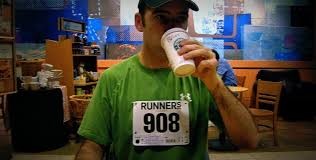
When people hear the word "caffeine," the first thing that comes to mind is its effects on stimulation, attentiveness, and tiredness. And it's true – caffeine and coffee have a wide range of health effects – many related to attention and fatigue.
Caffeine is a natural psychoactive stimulant that stimulates your central nervous system and brain by helping keep you alert and remain active. It's naturally found in leaves, nuts, and some plants' seeds – somewhere around 60 plants have been identified which produce caffeine.
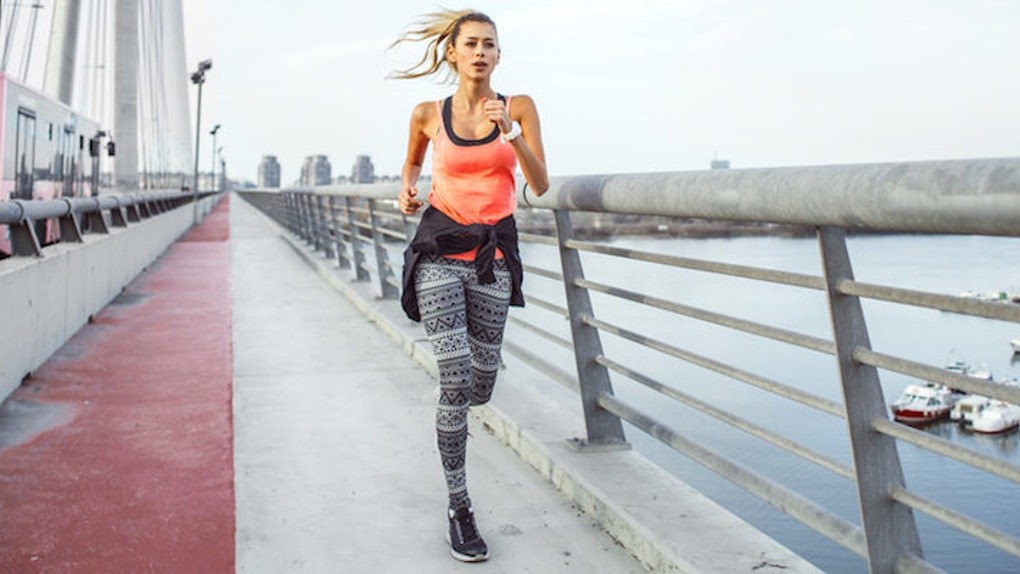
According to a study conducted by a Western Michigan scientist, at least 30 plants (out of ~ 300,000 flowering plants of different species) produce caffeine. Others put the number closer to 30. The reason plants have caffeine isn't known for 100% certain – but it may be as a pollinator attractor or perhaps a defense mechanism against insects.
The caffeine in some plants can poison plant pests and herbivores. This ends up discouraging them from attacking the plant again... if they survive the caffeine intake. Since caffeine is also toxic to the plant's cell, it's stored in individual cell compartments to keep it at distance from other cells.
Plenty of studies have found that drinking caffeine regularly can help improve your mental performance, especially your concentration, alertness, and attention. This is because caffeine suppresses the effects of adenosine, the neurotransmitter associated with sleepiness.
Scientists also discovered that there's a direct relation to the dose of caffeine you consume and your mental performance. There's just more caffeine around then to interfere with adenosine uptake.
For example, higher caffeine doses – up to a point – can aid in improving your cognitive speed, improve accuracy and alertness, and decrease fatigue. Going too high has its downsides, though, which we'll discuss a bit later.
Improving Heart Health
Another positive effect of drinking caffeine is improving heart health. Research studies show that consuming coffee in reasonable doses can aid in decreasing heart failure and strokes.
Caffeine and Exercise: What Does Science Say?
Many times, caffeine is more interesting as a performance-enhancing supplement – beyond staying up late and being more productive, it can help you lift more, jump further, run faster, cut your times, and otherwise make you a better athlete.
Why Might Caffeine Help Exercise Performance?
According to the International Society of Sports Nutrition, caffeine is an effective way of enhancing different types of exercise performance when consumed in moderate amounts. A meta-analysis showed caffeine positively affects muscle strength, aerobic endurance, muscle endurance, exercise speed, and jumping performance.
The results showed that caffeine affects your exercise performance by reducing fatigue, blocking the aforementioned neurotransmitter adenosine, and increasing your alertness and precision.
More relevant for athletes, it also increases the stimulation of your central nervous system, making physical exertion feel like it involves less pain and effort. This helps you become more effective and productive with each workout. Consider lifting, for example – much of your strength comes from CNS adaptation, and caffeine enables you to get the most out of what you can already lift.
For high-intensity exercises like strength sports, swimming, and sprinting, caffeine increases the number of fibers recruited in muscle contractions. This enables you to make forceful – and frequent – movements. Other studies have found that athletes or active adults who consume caffeine before working out have improved concentration.
Studies show that caffeine consumption in coffee or as a supplement taken one hour before exercise can boost endurance. More studies found that the use of coffee could help improve performance in running and cycling.
A 2017 study that involved male runners suggested that the consumption of caffeinated coffee an hour before a 1-mile event enhanced their performance. Their performance increased by 1.9 percent and 1.3 percent compared to runners who took a placebo or decaffeinated coffee.
All these studies prove that consuming coffee before aerobic exercise helps enhance overall performance. And if you're looking to incorporate caffeine into your endurance training, most of these studies looked at a dose of roughly 200 milligrams.
(09/20/2020) Views: 959 ⚡AMPby Gerard Paul
Did you know? Bone Broth Soup is packed with muscle boosting minerals and sodium for post-race recovery
There were stories about coconut oil and butter making a comeback. Now it’s soup. Long touted as a tool to help fight illness and inflammation, bone broth—a basic soup made with animal bones, among other ingredients—is trending among the smoothie-drinking, health-conscious crowd as a restorative miracle potion. But endurance athletes have been sipping stock for centuries.
“Homemade bone broth is an excellent source of minerals, like calcium, phosphorus, magnesium and potassium, in forms that your body can easily absorb. It’s also rich in amino acids, collagen and anti-inflammatory compounds, like chondroitin sulfate and glucosamine,” says sports nutritionist Melissa Hartwig.
“These nutrients improve digestion, aid in muscle repair and growth, reduce joint pain, promote a balanced nervous system, and strengthen the immune system.”

Granted, some nutritionists argue that many of the health claims surrounding bone broth aren’t backed by research, such as stock having anti-inflammatory properties or helping with GI issues; however, one undeniable benefit is the presence of extra minerals, such as calcium and magnesium, which are important for bone health and muscle function, and are not naturally bountiful in the dairy-free Paleo diet, says Leslie Bonci, director of sports nutrition at the University of Pittsburgh Medical Center’s Center for Sports Medicine.
Another nutritional bonus is its high sodium content—good for athletes training for or participating in a long-distance race.
“There’s a reason broth is served at aid stations during the run portion of an Ironman triathlon,” says sports dietitian Lauren Antonucci. “Toward the end of a race, you’ve lost a lot of salt from sweat and need to replace it in order to prevent muscle cramping and dizziness, but keeping up with your sodium intake is hard, especially because you’re sick of consuming so many sweet, sugary things, like gels and sports drinks. Sipping some broth at that point could play a role in maintaining your fluid balance,” Antonucci says, because sodium helps the body retain fluid.
One study found that athletes prefer savory over sweet tasting foods later on in an ultra-endurance running event, making broth a no-brainer choice for tired competitors. It doesn’t matter if it’s warm or cold, organic, veggie, chicken or beef—so long as it contains plenty of sodium, it will help you, Antonucci says.

Just remember that a little goes a long way: One four-ounce serving provides at least 200mg of sodium, on average, which is more than three times the amount in a packet of regular Gu. “Consuming just a sip or so at a time [every hour or so] is sufficient,” says Antonucci. “If you know you’re a salty sweater, you could take in a bit more, but in general, broth is something that you won’t need unless you’re going to be active for multiple hours at a time.”
And don’t forget to accompany it with additional fluids, foods, and electrolyte replacements, like sports drinks, water and gels, chews, or bars when you’re racing, says Bonci. “If broth was your only source of fuel during a prolonged activity, you wouldn’t be consuming adequate amounts of carbs or calories.”
Endurance athletes looking for broth’s sodium kick can buy boxed veggie, chicken, and beef stock at any grocery store, though some broth pundits would argue that the boxed stuff doesn’t impart the same health benefits as homemade stock. You can order homemade bone broth online or make your own with Hartwig’s easy recipe: system.”
The Ultimate Bone Broth Recipe for Athletes Ingredients: 4 quarts water, 1 teaspoon salt, 2 tablespoons apple cider vinegar, 2 large onions, unpeeled and coarsely chopped, 2 carrots, scrubbed and coarsely chopped, 3 celery stalks, coarsely chopped, 1 bunch fresh parsley, 2-3 garlic cloves, lightly smashed, 2-4 lbs. meat or poultry bones
Place all ingredients in a large pot on medium-high heat, or in a large slow cooker set on high. Bring to a boil, and then reduce the heat to low and simmer for 12 to 24 hours. Strain the stock through a fine mesh strainer into a large bowl and discard the waste. Let it cool, and then place the bowl (uncovered) in the fridge for several hours, until the fat rises to the top and hardens. Scrape off the fat with a spoon, reheat your broth and serve. (You can also add leeks, pepper, red pepper flakes, rosemary, thyme, sage and/or ginger.)
(03/18/2019) Views: 1,670 ⚡AMP
The RTW team logged 24,901 miles and 52.4 of these miles were run inside an NFL stadium
Did you Know? Run The World Challenge 2 team members Becca Pizzi and Michael Wardian both ran the marathon (first woman and first man) that was run inside the Gillette Stadium in Boston September 29.
This 114 lap race was the first-ever marathon held entirely inside and on the field of an NFL football stadium.
Dave McGillivray (also a RTWC 2 team member) was the race director. "Dave's marathons are my absolute favorite and his DMSE support team is second to none," says Becca.
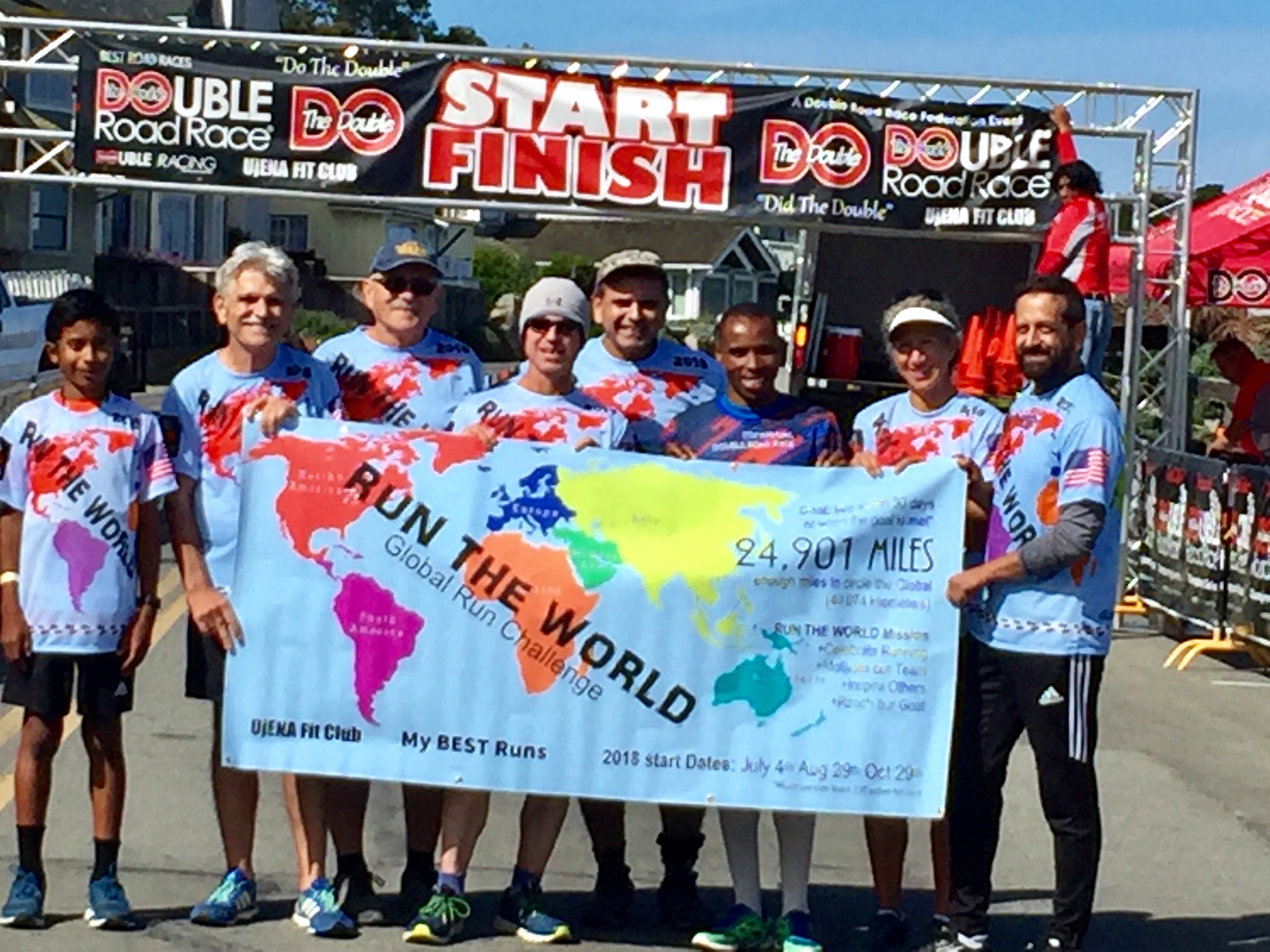
A ton of funds were raised for the New England Patriots Foundation helping the homeless...Both Becca and Michael have signed up for the RTW Challenge 3 team.
Run The World is an event created by lifetime runner 70-year-old Bob Anderson. He ran 260 miles for challenge 2 and even through he did not complete anything close to what Becca and Michael did, he still doubled his normal weekly mileage. Many team members were also motivated to run more hitting milestones of 50, 100, 200 or more miles before we finished.
"The finish line of the RTW Challenge is when our team have logged 24,901 miles," says Bob Anderson. It took 44 days 18 hours and 29 minutes to complete the task this time.
Runners age 11-74 ran miles in 24 different countries. In the little country of Palau 1,187 miles were logged. 74-year-old Frank Bozanich ran and logged 801 miles in the 44 days. There are so many amazing stories.
What has become really popular and a good motivator is the Run The World Feed. Many team members post notes and photos daily for other members to leave comments.
"I read every post and look at every photo and comment on each one," says Bob. "I started this with Challenge 1 and found this was a good motivator."
Lize Dumon in South Africa wrote, "The RTW community is very precious to me. It is like an extended running family, a safe place to share everything running."
RTW Challenge 3 starts October 29. The Challenge will help get you in better shape so you can reach your goals. This can be a tough time of the year to get out the door. We will help each other. Sign up today and join our team.
(10/15/2018) Views: 2,346 ⚡AMPDid you know that Ballet training can improve your running
Have you ever watched a ballet dancer soar through the air and wondered how they make it look so easy?
It’s a ballet dancer’s training that gives them such athletic grace. Ballet has developed tremendously in recent years, in both demand and aesthetics.

Dancers today are required to have a far greater range of dynamics, flexibility and style. Yet the fundamentals stay the same: continuous practice and repetition of technical exercises that are designed to develop control, strength, precision, a greater range of mobility, fluidity and kinaesthetic awareness (an internal knowledge of where each part of your own body is in movement).
In fact, skills that would make the ideal trail runner. Ballet originates from the 16th century European courts. Ultimately, it is built upon precise alignment.
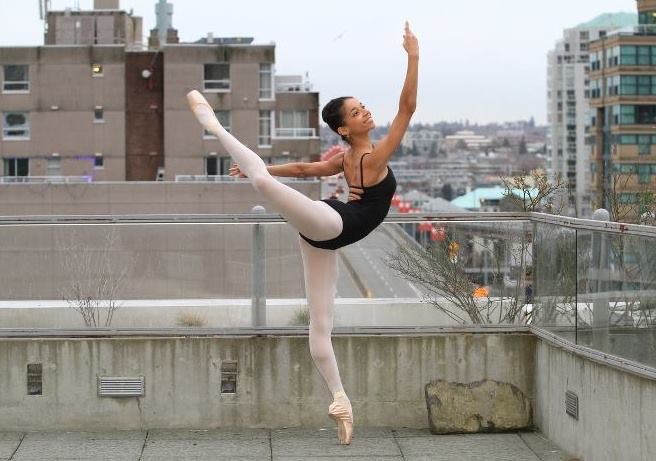
Ballet is performed in ‘turnout’. This is the rotation of the leg at the hips that causes the feet (and knees) to turn outward, away from the front of the body. The result is that the lower trunk, pelvic region and upper thighs strengthen in order to maintain this healthy alignment.
Core control is paramount, even when stationary. Without it, stabilisation of the pelvis and spine are lost. The upper back loses its strong base and postural errors, such as rounded shoulders, begin to appear.
For the dancer, this means the loss of the ability to balance and to execute movements properly. For the runner this is also true, added to which a weak core causes greater stress for the pelvic floor muscles.
(Both men and women have pelvic floor muscles between the legs which support the internal organs! The pelvic floor comes under greater stress during impact work such as running.)
(09/20/2018) Views: 11,017 ⚡AMPby Trail Running Magazine
Frenchman Michel Jazy set the World Record for the Mile 53 years ago clocking 3:53.6
DID YOU KNOW: 53 years ago, on Jun 9, 1965 – Frenchman Michael Jazy runs World Record mile in 3:53.6. He won the 1,500 meters silver medal at the 1960 Summer Olympics, as well as two golds (in 1962 and 1966) and one silver (in 1966) at the European Championships. He set nine world records: in the mile (once), 2,000 meters (twice), 3,000 meters (twice), the two miles (twice) and the 4×1500 metres relay (twice). Jazy was born into a poor coal-mining family from Poland. His grandfather, together with his wife and their daughter, emigrated from Poland to France after World War I. Michel's father was a coal miner, Michel's mother worked in a brewery in Lille. Michel was raised by his grandmother during much of his childhood. He was 12 years old when his father died. When Michel was 14 years old, he, his mother and his older sister settled in Paris. Michel was passionate about soccer when he was a schoolboy. He would spend hours daily playing soccer. He left school at the age of 14 and became a uniformed doorman and elevator operator at a bridge club near the Arc de Triomphe. At 16 he became an apprenticein a neighborhood printshop. Jazy won his first French national championship title in 1953 – the 1000 m race at the youth level. Just 12 years later he sets his world record in the mile. (06/10/2018) Views: 2,109 ⚡AMPby Gary Cohen
The 1907 Boston Marathon Winner Tom Longboat earlier hated life at a state-run school and ran away
DID YOU KNOW: Tom Longboat was born 131 years ago (June 4, 1887). In 1907 he won the Boston Marathon in a record time of 2:24:24 over the old 24-1/2 mile course, four minutes and 59 seconds faster than any of the previous ten winners of the event.
The next year he collapsed in the 1908 Olympic Games marathon, along with several other leading runners. A rematch was organized the same year at Madison Square Garden in New York City.
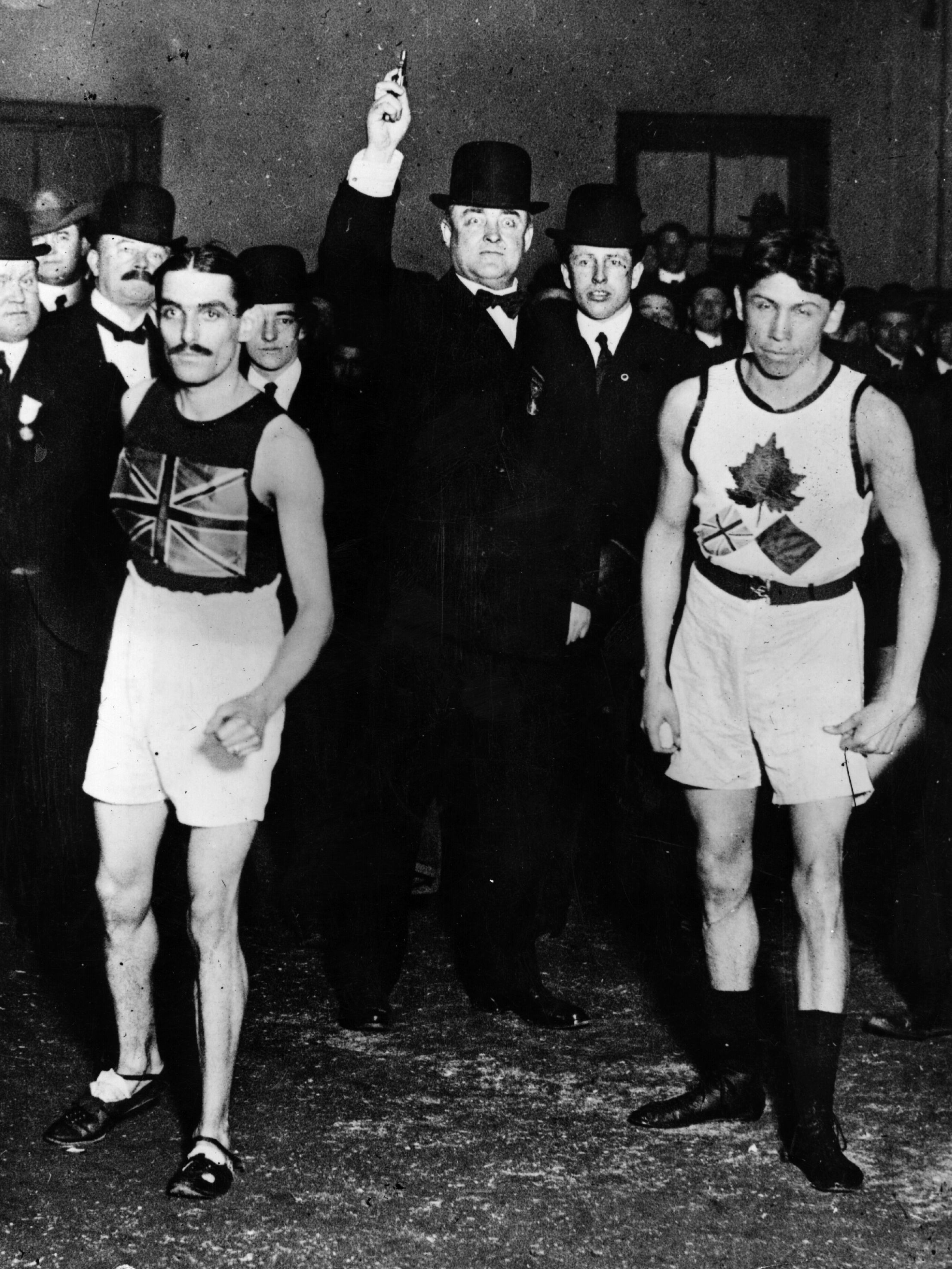
Longboat won this race, turned professional, and in 1909 at the same venue won the title of Professional Champion of the World by defeating Dorando Pietri and Alfred Shrubb in front of sell-out crowds.
The Onondaga athlete was one of thousands indigenous children in Canada to be separated from their families and forced into a state-run education in the country's residential school system.
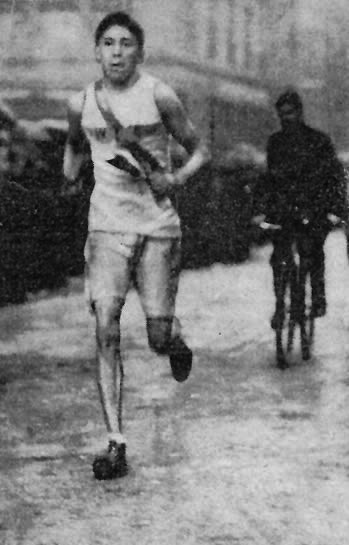
Longboat, rebelled against being forced to speak English and to abandon his indigenous beliefs in favour of Christianity. He hated life at the school.
After one unsuccessful escape attempt, he tried again and reached the home of his uncle, who agreed to hide him from authorities. After his athletic successes, he was invited to speak at the institute but refused, stating that "I wouldn't even send my dog to that place."
Longboat, from Ontario's Six Nations reserve, also served as a dispatch carrier in France during World War One. He was inducted into the Canadian Sports Hall of Fame in 1955.
After the war, Longboat settled in Toronto where he worked until 1944. He retired to the Six Nations Reserve and died of pneumonia on January 9, 1949.
(06/05/2018) Views: 24,961 ⚡AMPDid you know that in France and Italy all Runners need a medical release signed by a doctor to run a race?
I decided that I wanted to run a 20K Race in Paris while on a business and pleasure trip there. The race is tomorrow May 27. I tired to register on line but since everything was in French I decided weeks ago I would just sign up at Endurance Sports on Saturday. I had noticed that it did say Runners needed a medical release signed by a doctor. Being an American I thought that only applied to Runners living in France. I had met Julie who worked at the front desk of our hotel in Paris. Luckily she was a runner. She called and was told that yes I needed to get a full exam from a doctor because I am over 50. I would need to go to a hospital since it would have to be a complete physical. In France and Italy you have to present a signed medical statement to run a Race. It did not matter that I have run nearly 1000 races and regularly run 20 or more miles weekly. Julie at the front desk made a few calls and because she does run races she came up with a solution. I am racing 20K through Paris Sunday. I really don’t feel this is a good requirement. I think signing a waiver should be good enough. If Julie was not a runner this would not have happen. This is a heads up to those wishing to race in either France and Italy. But also I think this requirement should be changed. (05/26/2018) Views: 2,132 ⚡AMPby Bob Anderson
laszlo Tabori was the third man to break four minutes for the mile
DID YOU KNOW: Laszlo Tabori was the third man in history to break the sub-four minute mile barrier, setting a new European Record with a time of 3:59 on May 28, 1955. Roger Bannister was there. Laszlo posted this on Facebook March 5th after Roger Bannister passed away.
“One of my favorite pictures with Sir Roger Bannister... We were all chasing the sub 4 minute mile. In those days it was a feat comparable only with climbing Mt. Everest. Roger was someone I looked up to and admired.
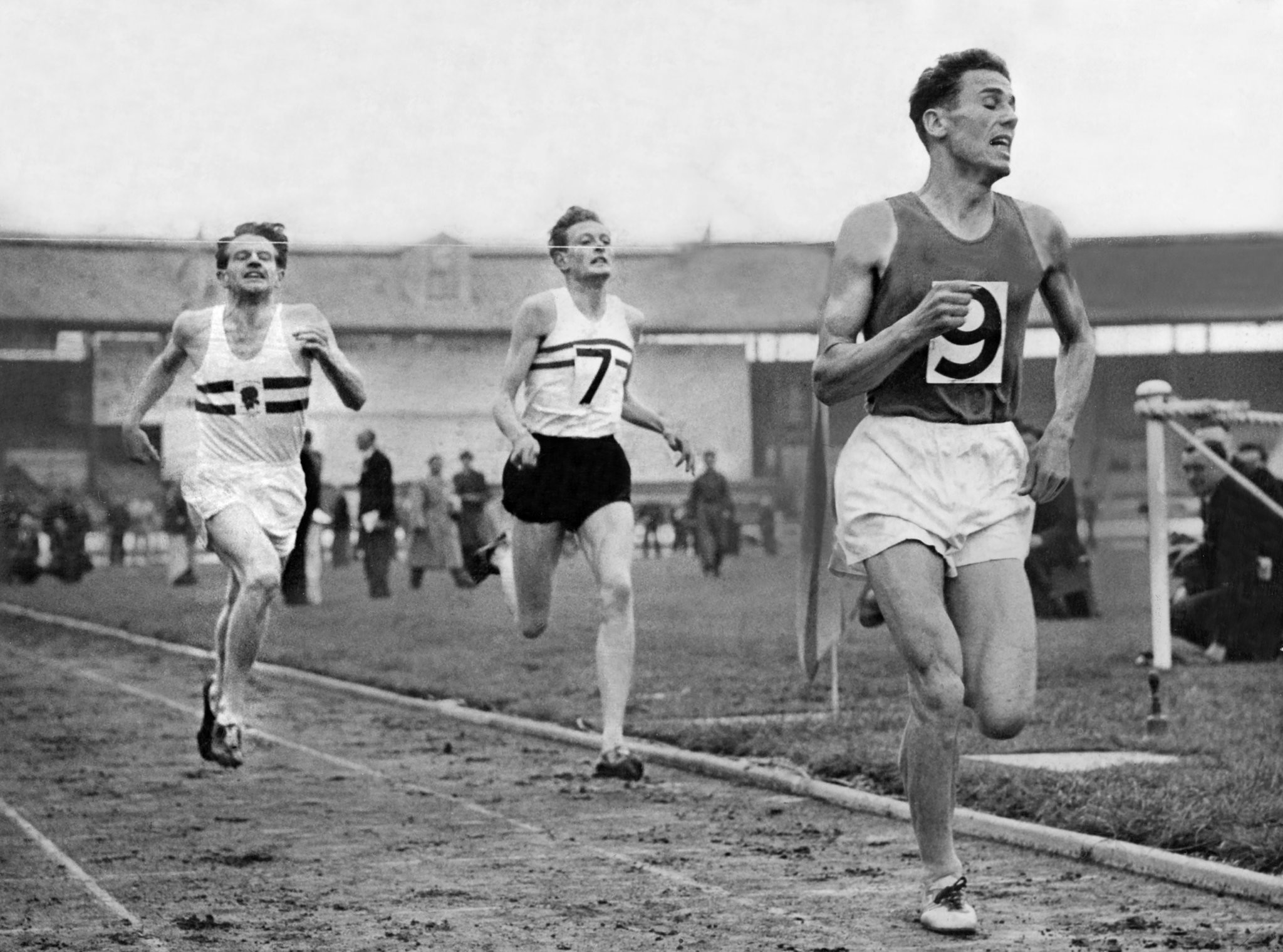
At the height of his running career, he stopped in order to concentrate on his studies in medicine. I had the great fortune to be one of the early ones who followed in his footsteps just a year later at White City Stadium, London. Here Roger is shaking my hand and offering congratulations as I had quite unexpectedly just became the 3rd person to enter this very elite sub-4 min mile club,” wrote Laszlo Tabori.
Laszlo was born in Košice. Although he had already taken up running in his youth, his serious career only started in the early 1950s under Mihály Iglói, the legendary coach.
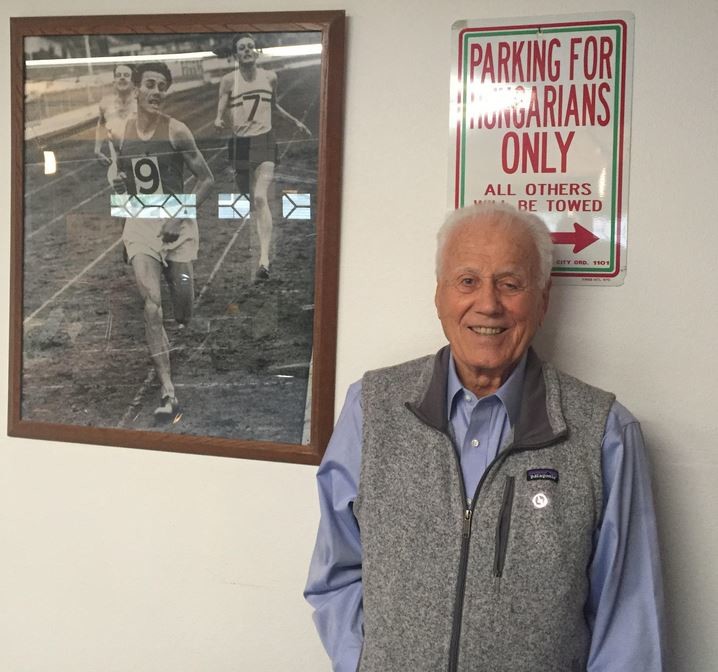
Among Laszlo’s many accomplishments include being an Olympian in the 1956 Olympic Games in the 1500 and 5000m races. Mihaly Igloi and his track team were in Budapest, and saw the chaos of the Soviet invasion, but were fortunate to leave the country and arrive in Melbourne.
Understandably, the Hungarians performed poorly at the Games. After the competition, Igloi, and one of his top runners, Laszlo Tabori, made the fateful decision to forgo their return to Hungary and defect to the United States.
Tábori retired from running in 1962, since he couldn’t compete for Hungry and was not a United States citizen. Tábori returned to distance running as a coach in 1967, his training methods based directly on Iglói's, and has been the coach of San Fernando Valley Track Club since 1973.
(05/16/2018) Views: 12,422 ⚡AMPby Bob Anderson
How Boulder Colorado became the Mecca for elite distance runners and runners of all abilities
DID YOU KNOW: Frank Shorter helped turn Boulder into the mecca for elite distance runners and hotbed for recreational athletes that it is today.
The two-time medalist, gold in 1972, silver in 1976, came to Boulder for the first time after graduating from Yale. Raised in New York, Shorter became an early believer in the benefits of altitude training.
In setting his course for Olympic glory, he chose Boulder because the University of Colorado had the only indoor track above 5,000 feet in the United States. He remembers only a couple of other post-collegiate runners in town at the time, including a hotel dishwasher who ran a crash pad for hippies.
Two years after his first training stint in Boulder, Shorter became the first American in 64 years to win an Olympic marathon.
Shorter’s historic breakthrough at the Munich Olympics, coupled with his silver medal four years later in Montreal, helped ignite the recreational running boom of the late 1970s, and inspired subsequent Olympic hopefuls to move to Boulder for the same reasons he did.
Then-exceptional international runners, including three world-record holders, arrived in the ’80s. After that came the world-class cyclists and triathletes. Meanwhile, CU emerged as a power in cross country running, producing six individual national champions and seven team titles.
Today, Boulder teems with world-class endurance athletes and some of the country’s fastest recreational runners, and it all traces back to Shorter’s hunch about altitude training. Runners of that era didn’t know why it worked — scientific explanations would come later — they just knew if they trained at altitude, they ran faster when they raced at sea level.
“I sensed it,” Shorter said. “There was no real science you could look at. I didn’t know your blood volume increased. All I knew was that I was getting better, more on an exponential curve than even a straight line. I knew that there was something about doing it that didn’t just have to do with my increased training intensity.”
(05/13/2018) Views: 2,862 ⚡AMPby John Meyer/ The Denver Post
Alberto Salazar still holds one American Road Record which he set in 1981
DID YOU KNOW: The American Road Record for 8K is 22:04. It was set over 37 years ago. On January 4, 1981 Alberto Salazar ran that time in Los Altos, California at the Runner's World Five Mile Invitational (5 miles is 154 feet longer than 8K).
It is a distance that is not run very often but that is a long time for the record to still be on the books. That same year Alberto won the New York City Marathon in 2:08:13 as he did the following year and 1980 as well.
He also won Boston in 1982 in 2:08:52. A race that would be known later as the "Duel In The Sun."
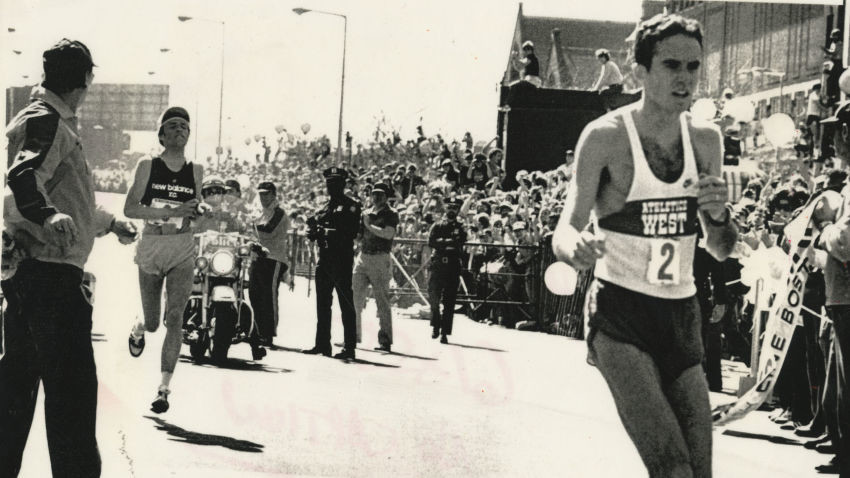
Dick Beardsley and Alberto (photo) battled right up to the end. Alberto was born in Cuba in 1958 and immigrated to the United States as a child with his family. Salazar currently is the head coach of the Nike Oregon Project in Portland, Oregon.
(05/01/2018) Views: 4,828 ⚡AMPby Bob Anderson
The first High School Runner to run a sub four minute mile in 1964, Jim Ryun is 71 today
DID YOU KNOW: Today is Jim Ryun’s 71st birthday. Jim was the first prep runner to run a sub-4:00 mile which he did in 1964 in 3:59.0. His 1965 time of 3:55.3 stood as a high school record for 36 years. A three-time Olympian in 1964, 1968 and 1972, Jim won the Silver Medal in the 1968 Olympic 1,500 meters in Mexico City, set World Records in 1966 of 1:44.9 for 880 yards (1:44.3 for 800m en route) and the mile (3:51.1). In 1967 he set World Records of 880 yards indoors (1:48.3), mile (3:51.1) and 1,500 meters (3:33.1), he tied Tom O’Hara’s indoor mile WR of 3:56.4 in 1971, was five-time NCAA champion at the University of Kansas, at Wichita East High School was three-time Kansas State mile champion, was 1966 Sports Illustrated ‘Sportsman of the Year’, 1966 Sullivan Award honoree, 1966 ABC's Wide World of Sports Athlete of the Year, and Track and Field News 1966 and 1967 Athlete of the Year. Jim was one of my heroes that got me started running in 1973 and remains one of my heroes. Last summer Jim was awesome to be my milestone 100th interviewee at Gary Cohen Running. (Click on link to read the interview.) (04/29/2018) Views: 2,126 ⚡AMPby Gary Cohen
Derek Clayton who held the World Marathon Record for 14 years, says shoes and pacemakers is why today's times are so fast
DID YOU KNOW: On June 12, 1965 Japan's Morio Shigematsu broke Abebe Bikila's world marathon record clocking 2:12:00 at the Polytechnic Marathon near London. Then on December 3, 1967 Australian's Derek Clayton shattered that record clocking 2:09:36 at the Fukuoka Marathon.
Derek was training over 250 miles a week and was clearly the world's best marathoner at that time. Then on May 30, 1969 he ran a marathon in Antwerp, Belgium mostly on cobble stones. He clocked 2:08:33 beating his own time by over a minute.
Skeptics throughout the following decades would speculate that the course must have been short. Yet only 11 days before his historic run in Belgium, Derek ran at high altitude and won a marathon in Turkey May 19th clocking 2:17:26.
“I had to run faster than I'd planned. If I hadn't run in Turkey I would have run 2:07 in Antwerp," Clayton said. "Maybe the course was short but Derek had nothing to do with that," says Bob Anderson, MBR & RW founder and a good friend of Derek.
"Any way, worse case scenario is that Derek held the world record he set in Fukuoka until Ron Hill ran faster (2:09:28) on July 23, 1970. That is two and half years.
Best case scenario, Derek held the world record for 14 years, until Robert De Castella ran 2:08:18 December 6, 1981 at Fukuoka. Derek was one of the world best marathoners of all times, the first under 2:10.
Yet even today when Derek's name comes up there is talk about the possible "short" course. I think it is about time we give him the credit that is due."
Yes, times today have gotten a lot better but there are two things that are clearly different today. "...the shoes they are wearing...and something I am dead set against, pacemakers," says Derek.
(04/19/2018) Views: 2,694 ⚡AMPby Bob Anderson
Shalane Flanagan’s Mother once held the World Record in the Marathon
DID YOU KNOW: Cheryl Bridges, now Cheryl Treworgy, once held the American and world record in the marathon. Cheryl Bridges was born December 25, 1947 in Indiana.
She began her running career as a sophomore at North Central High School in Indianapolis. In her senior year in high school, she competed in the national cross-country championships. In 1966, she became the first female athlete in the U.S. to receive an athletic scholarship to a public university — Indiana State University. She graduated in three years with a degree in physical education.
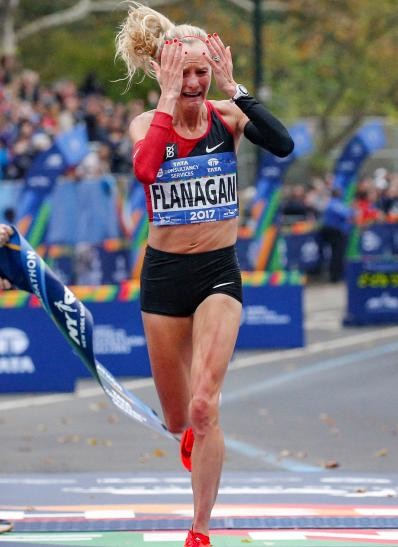
In 1969, she finished fourth in the World Cross Country Championships in Scotland. She set the American records in the 3 mile and 5,000 meter distances. On December 7, 1971, Bridges ran her first marathon, finishing the Culver City Marathon in a world record time of 2:49:40.
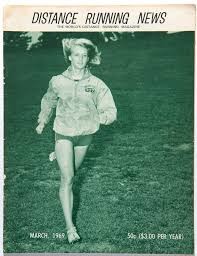
She had a lot of ideas and ambitions. She was the holder of a patent on utility sports bras and was the former buyer and part-owner of Frank Shorter Sports stores.
Cheryl, now 70, is a professional photographer for her own company, Pretty Sporty, and was recognized in 2010 as Track and Field Writers of America Photographer of the year.
Cheryl is the mother of Shalane Flanagan, who among other achievements set an American record in the 2008 Summer Olympics Beijing in the 10,000m and won the New York City marathon on November 5, 2017.
Shalane is going after a dream on Monday. This dream is to win the Boston Marathon. Her mom would be proud.
Cheryl Bridges appeared on the March 1969 cover of Distance Running News.
(04/11/2018) Views: 3,376 ⚡AMPGunder Hagg's world records stood for almost a Decade
DID YOU KNOW: Gunder Hagg set over a dozen middle distance world records at events ranging from 1500 to 5000 meters, including three at both the 1500 meters and the mile, one at 3000 meters and one at 5000 meters. It all began on New Year’s Eve 1918 when Gunder Hägg was born on a small farm in the forests of northern Sweden. From a fairly early age he had to help out on the family farm where the main income came from timber work. His school was three kilometers away a distance which he walked, ran or travelled by ski (in the winter) every day. Hagg and fellow Swede, Arne Andersson, lowered the record for the mile to just over four minutes (4:01.4). Both athletes set three world records for the mile. However, Hagg had the last word when he ran 4:01.4 in Malmö, Sweden in 1945 (Hagg’s record was not broken until Roger Bannister ran the first sub-4 mile in Oxford in 1954). Hagg was also the first man to run a sub-14 minute 5000m. All these performances were run on cinder tracks. He certainly made his mark in athletics history: At the main distances (1500m, 1 Mile and 5000m) his records stood until 1954, for about a decade! Gunder Hagg passed away November 27, 2004 at the age of 85. (04/06/2018) Views: 2,428 ⚡AMPOne of the Greatest American Distance Runners of all times has to be Gerry Lindgren
DID YOU KNOW: Here are some reasons why Gerry Lindgren is still one of American's greatest distance runners ever.
In 1964, as a high school senior, Lindgren ran 5000 meters in 13:44, on a clay track in Compton, CA setting a U.S. high school record that would remain unbroken for 40 years.
On July 25, 1964, Lindgren outran two seasoned Russian runners to win the 10,000m event in the US-USSR Track Meet in Los Angeles.
Lindgren ran 200 miles a week for 6 weeks in preparation for the US-USSR meet. After that victory, he also set a new teenage record of 13:17.0 for 3 miles while competing in Jamaica.
Lindgren and Billy Mills battled each other in the 6-mile at the 1965 AAU Nationals meet. Mills won with a diving lean, while both were timed in 27:11.6, a new world record.
Maybe Lindgren's greatest race came during a May 1966 NCAA Regional meet at age 20, in the 3-mile run on a dirt track during a cold, windy day in Seattle. He raced to 12:53.0, just missing the world record of 12:52.4 held by Ron Clarke.
"Gerry did some amazing things in his short career," says Bob Anderson. "It was very exciting meeting Gerry and featuring him in our movie A Long Run." Gerry has been living in Hawaii since 1980 and still runs regularly.
(03/01/2018) Views: 3,183 ⚡AMPBilly Mills’ dad told him, someday, son you’ll have wings of an Eagle
DID YOU KNOW: Australia’s world record holder Ron Clarke was the favorite in the 10000m at the 1964 Tokyo Olympics. America’s Billy Mills (26), remembers, “I was diagnosed as hypoglycaemic: low blood sugar. I didn’t know if I could finish...But I just tried to stay with the leaders, lap after lap after lap.” Then came the moment that inspired Mills. Spotting the eagle embroidered on the shirt of a German runner, he cast his mind back to his childhood and kicked for home. “The wings of an eagle!” Billy says. “Back to my dad...‘Son, someday you’ll have wings of an eagle’. I may never be this close again. I’ve got to do it now...Then I felt the tape break across my chest. A Japanese man asked ‘Who are you?’ And I thought I’d miscounted the laps: ‘Finished’ You are the new Olympic champion’.” In a breathtaking final lap watched by a crowd of 85,000 and millions of TV viewers around the world, Mills stunned everyone, bursting into the lead and breaking the tape in a new Olympic record time of 28:24.4, 50 seconds faster than his previous PR. (02/23/2018) Views: 2,469 ⚡AMPSomething you might not know about Marathon WR Holder Paula Radciffe
DID YOU KNOW? Paula Radcliffe may be defined by her incredible accomplishments in the marathon but there is little doubting the significance the half marathon played, and more specifically the IAAF World Half Marathon Championships, in her success over the iconic marathon distance. A little over six weeks after the bitter disappointment of finishing fourth in the 10,000m at the 2000 Sydney Olympics, the British distance runner opted to enter her first IAAF World Half Marathon Championships in the Mexican port city of Veracruz. Just two weeks earlier, Radcliffe had impressed on her half marathon debut running a European record of 1:07:07 at the Great North Run. Yet it was to be her display in blazing temperatures in Veracruz, where she secured her first global title. “I enjoyed the race so much and was very proud to win a global title,†says Radcliffe of her victory 18 years ago. “It reinforced in my mind the decision we had made to move towards the roads." (02/19/2018) Views: 1,823 ⚡AMPAbebe Bikila had only run two marathons before winning and running a PR by over six minutes in Rome
DID YOU KNOW? Abebe Bikila was a member of the Imperial Bodyguard, and was a last-minute addition to the Ethiopian team but caused a sensation by running barefoot through the streets of Rome and winning gold, at the 1960 Olympic Games.
Four years later he retained the title, this time wearing shoes. On both occasions he clocked world best times... Abebe participated in a total of sixteen marathons, winning twelve and finishing fifth in the 1963 Boston Marathon.
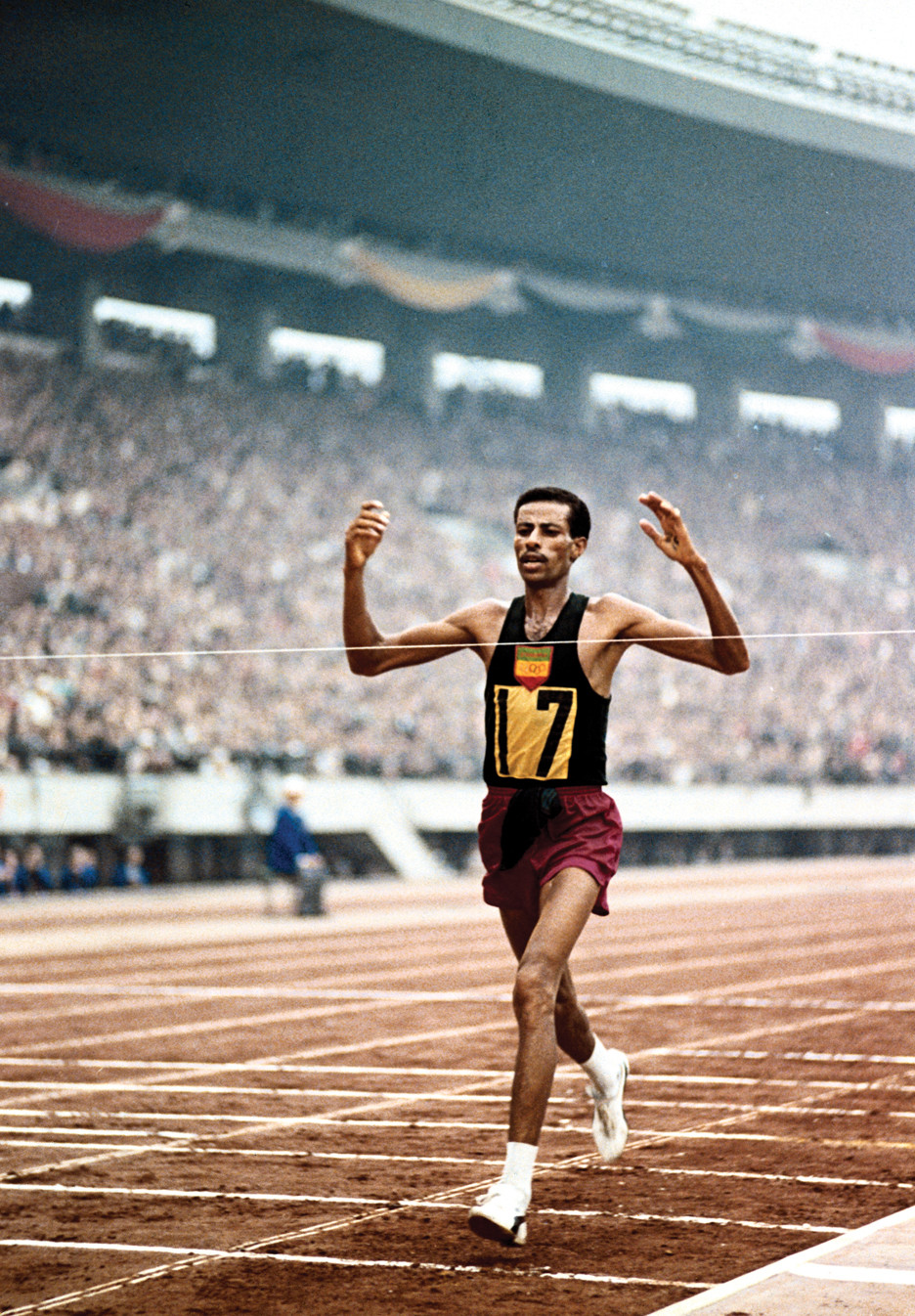
In July 1967, he sustained the first of several sports-related leg injuries which prevented him from finishing his last two marathons.
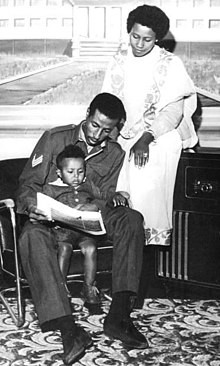
On March 22, 1969, Abebe was paralyzed as a result of a car accident. Although he regained some upper-body mobility, he never walked again. He died at age 41 on October 25, 1973, of a cerebral hemorrhage related to his car accident. He had only run two marathons before Rome and there he set a PR by over six minutes.
(02/13/2018) Views: 3,830 ⚡AMPOlympians


